




Sustainability is, in all ways, the hot buzzword of the design industry.
All building designers seek to create, achieve and perfect the ultimate sustainable design. But really, what is the true meaning of sustainability, and how does the top quality designer make sustainable design work for them, the design industry, and the Australian and global built environment?

In the Building Designers Association of Australia, designers strive continually to create and present ecofriendly designs that, having been cultivated through the use of sustainable techniques and materials, both respect and enhance the earth and the environment. At the same time, they seek to render these designs optimally functional and absolutely beautiful.
In the pages of this edition of By Design magazine, we invite you to behold and learn more about the finest sustainable designs, as produced by Australia’s top designers and thermal assessors, our industry partners and friends. Also learn more about the design trends governing and defining today’s sustainable design industry, including National Residential Building, plus award winning projects and designs.
Please enjoy this informative journey through a wiser, more beautiful and more functional sustainable built environment.
Cover: Benjamin Mulholland




The outlook for Residential Building is ominous. All of the leading indicators show that demand for new housing and building activity spiked in 2021. The policies that drove that spike have now been withdrawn. The next phase of the business cycle will be dominated by the industry’s response to higher interest rates that are being pursued by the RBA to counter the outbreak of inflation.
It is hard to overlook the strength of the recent spike. Record low interest rates and stimulatory housing policy incentives from Commonwealth, State and Territory Governments, including the HomeBuilder program, and stamp duty reductions for first home buyers, buoyed demand. While the rate of increase in approvals and commencements was breathtaking, the drop off was equally rapid. The increase in the value of actual work done over the year was less spectacular. Looking at the situation in building New Houses, where the spike was sharpest, the increase over the full 2021-22 year was 11.1%.
Residential Building approvals fell by 9% over the 2022 financial year, while commencements followed the same tune dropping by 3%. Both indicators are forewarnings of more contractions to come.
Looking at Residential Building performance over many years, it is clear that there are lags, as building projects transition through the development pipeline from approval to commencement and on to completion. The situation through this cycle has been complicated by disruptions in the supply chain. This has driven shortages in key materials (structural timber, reinforcing steel and electrical equipment components). There are also reports of shortages in skilled trades. In addition to sharp increases in builders’ costs, these disruptions also lead to delays. This may have stretched out the normal lags in the development pipeline.
It is also likely that the different subsectors are subject to different lead times and lags. Alterations and renovations can be switched on and off with very little delay. House building is also generally relatively quick in normal circumstances. Building for large scale multistorey apartments often take two, three or more years in the
development pipeline. These forecasts specifically provide for these lags.
The RBA has responded to surging inflation with a concerted campaign raising the cash rate by a cumulative 250-basis in quick succession. This has halted the interest of first-time homebuyers and investors, as access to capital becomes more stringent. This will impact on demand as well as increase the cost of funds for builders. It is important to factor in the lags and allow for the time it takes to adjust plans.
This is a very challenging time to be a builder. Industry sources look back on the spike in demand as a period of “profitless growth”. While the volume of demand was powering ahead, builders were watching higher materials costs and higher wages eat into their margins. The next problem is that while costs are high, buyers are expecting price cuts in line with falls in house prices. Difficulties in dealing with these issues has culminated in a string of insolvencies. This is placing clouds of doubt in the minds of some potential homebuyers who are now more hesitant to contract with builders.
Reflecting the lags and the large volume of work to be done in the pipeline the forecasts project a drop in the value of Residential Building work to be done of over 8% over the next three years.
We expect the market to reach a turning point in mid-tolate 2024-25, as the Residential Building sector responds to improving economic conditions and interest rates return to neutral settings. It is also likely that Australia will return to ‘normal’ levels of population growth, and previous levels of immigration in the next 2-3 years, which will stimulate demand for housing.
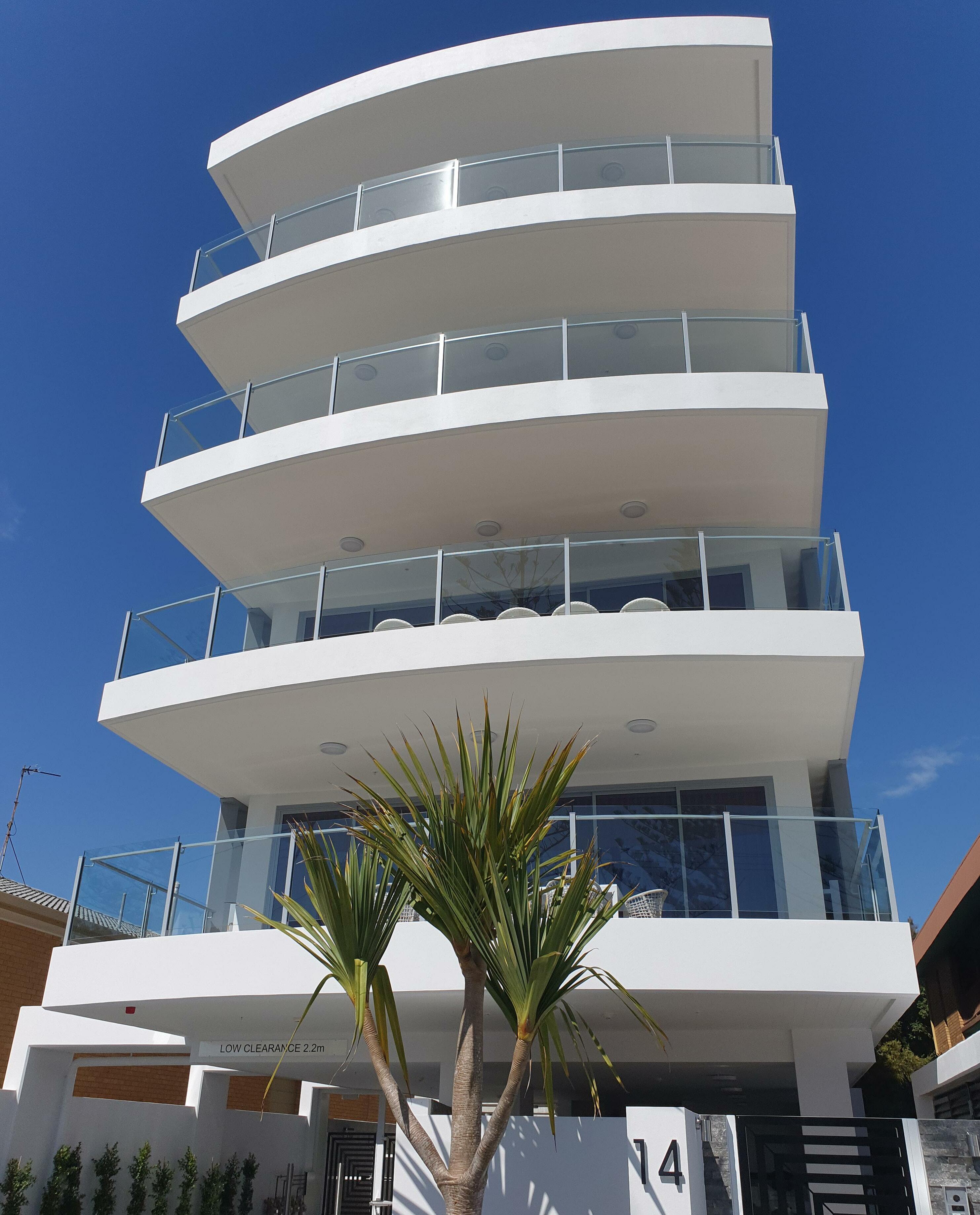
The ramp-up in the value of work done in building New Houses peaked last year. Work done in New Houses is now expected to fall for three years, with the first year, 2022-23, experiencing a 2.4% drop.
A further, larger 5.6% fall is projected for 2023-24 and this will moderate to a 0.2% fall in 2024-25. This will take activity to $36 billion at the end of the next three years.
Work done is then projected to level-off in 2025-26 and then return to trend.
Work done in building New Other Residential (Apartments and Townhouses) fell by 8.9% last year to $23 billion. This was the continuation of the downtrend which began in 2017-18.
The forecasts project that demand for New Other Residential (Apartments and Townhouses) dwellings is recovering in line with recent increases in approvals and starts. There is normally a slightly longer lag in this building category. The sector is also dealing with shortages in materials and labour and grappling with price increases. It will take the next two years or so to absorb the ramp up of work that entered into the development pipeline during the recent HomeBuilder spike.
Large Alterations and Additions (which require development approval) continued a spectacular rebound growing by 5.8% last year. This increased the value of work done over to $11.2 billion in 2021-22.
This sub-category of activity seemed to benefit from the turmoil that marked most of 2020. HomeBuilder and other programs provided by Commonwealth and State Governments provided support to build or substantially renovate an existing home. Many households may have been priced out of the market to buy a larger home, while they had the ability to finance additions to their existing property.
Now that the stimulus measures have been withdrawn and given recent increases in interest rates, the forecasts project a drop off in work done in Large Alterations and Additions in 2023-24 of 10.7%.
Other (Mainly Small Alterations and Additions) also continued to expand significantly last year (2021-22) growing by 8% to arrive at $35 billion. Building work in this sub-sector involves a wide range of building activities including kitchen renovations, pools and landscaping, as well as owner occupied provided spending. While it relates to smaller scale building activities, this category is applied to the large number of the existing stock of dwellings. It is likely that this component employs nearly as many people as are involved in building of New Other Residential.
This category of building work grew for many of the reasons that Large Alterations and Additions surged. The pandemic and lockdowns provided many households with a strong incentive to upgrade their existing residence. Home improvements may have been some consolation for those households that missed holidays and travel. Many householders applied their time and money during the lockdown periods to home improvements. Builders and other service providers continued to provide much building work over recent months and there are difficulties in finding a builder to do such work and complaints about increases in prices. This activity will see a prolonged decline in growth beginning in 2022-23 and lasting for three years, in line with the national Residential Building medium term forecast.
Instead of a much feared contraction through the period of COVID lockdowns, a two year wave of building projects inundated builders with demand for building work. As a result the value of Residential Building work done grew by 2.8% in 2021-22 to reach $109 billion. The surge in Residential Building is over. Residential Building will bear most of the burden of adjustment following higher interest rates and the withdrawal of various stimulus measures. The value of work done is projected to contract by 8.1% over the three years to 2024-25.

The remarkably strong rebound seen immediately after the relaxation of COVID-19 restrictions is continuing.
State Final Demand grew across every state and territory over the year to June 2022. Growth ranged from 2.9% in the Australian Capital Territory to 8.2% in the Northern Territory. An average of 5.1% was achieved for Australia at large.
Population
Australia experienced a steep drop in population growth, primarily because of the falls in Net Overseas Migration. Some states were more reliant than others on immigration to drive population growth. Forecasting population growth rates by state and territory entails many analytical challenges in the present circumstances. The values reported here should be viewed as rough guidance.
The numbers of additional residents fell in all states and territories in 2020-21. The fall was most pronounced in Victoria, and with the Northern Territory also experiencing a net immigration loss. All states and territories returned to positive growth in 2021-22. This reflects the prolonged effects of a suspension on international immigration subsiding, and paves the way for a gradual return to normal levels.
The forecasts project a strong phased recovery in population growth after international borders reopen and immigration caps rise, with approximately 443,000 persons in 2022-23 followed by approximately 399,000 persons in 2023-24. Population growth will begin to ease around 2024-25 to levels seen between 2018 and 2019. The larger eastern seaboard states are expected to return to growth rates of close to or around 100,000 persons per year.
The decline in the number of additional people was most pronounced in the nation’s capital cities.
Sydney and Melbourne experienced the biggest decline in population growth, falling from peaks of around 110,000 and 140,000 respectively, in new persons in 2017-18 to close to or below zero in 2020-21.
Population growth is expected to resume in the capital cities over 2022-23 and into 2023-24, and then remain less volatile over the medium-term.
Population growth in the regions has heated up in 2021-22, with sustained growth in key regions including the South East Queensland region (outside of Greater Brisbane), and key New South Wales regional centres as Australia begins to live with COVID-19.
A sustained trial of remote working during the COVID-19 lockdown, along with other factors including high city property prices is set to drive continued population growth in key regions into the forecast period.
Looking at the additions to the Major Projects Database recorded since the last set of ACIF forecasts were produced can provide some insight into what is changing in the building and construction market in each of the Australian states and territories. One simple way to do this is to count the number of major projects that have entered the database as an indicator of the level of interest in building and construction activity.

Infrastructure categories Bridges, Railways and Harbours, and Roads are expected to gain large increases in the value of work done in the next five years, benefiting from the expanded infrastructure spend in the pipeline from Victoria’s “Big Build”. Changes in Electricity and Pipelines will be influenced by the progress made on a number of new solar farms, wind farms and renewable energy hubs in the short to medium term, a number of which are currently in the early planning or development approval stages.
New Houses is also expected to increase over the next five years, when the immanent downturn in Residential Building is reversed. Conversely, New Other Residential (Apartments and Townhouses) is expected to lose value over the next five years reflecting the fact that the surge experienced in the last five years will not be repeated over the next five years.
VictoriaHealth and Aged Care are currently forecast to have a slight increase in value over the next five years. This forecast may be revised upwards as the health infrastructure projects committed in the 2022-23 Victorian Budget are approved and enter the construction pipeline. Education is expected to lose value (sightly), but this may also be revised upwards as the Victorian Government announced an extra $1.8 billion for new schools and upgrades.
As with other jurisdictions, Telecommunications is expected to lose value over the next five years, reflecting completion of the construction for the NBN. Retail and Wholesale Trade is also losing value as a result of structural downtrend compounded by shrinking demand resulting from loss in population growth as well as the ongoing structural shift towards e-commerce.
Bridges, railways, harbours
$ million pa Roads Miscellaneous
Electricity, pipelines New Houses Industrial Other commercial
Alterations and Additions (large)
Water and sewerage
Health and aged care
Entertainment and recreation Recreation and other
Other (mainly small alterations and additions)
Heavy industry incl. mining Office
Educational
Retail/Wholesale trade
Accommodation
Telecommunications

Sub-sectors which are expected to see an increase in work done over the next five years are at the top of the figure below. This is led by investments in infrastructure especially in Electricity and Pipelines and Bridges, Railways and Harbours. The increase in work done in Other Commercial in the next five years is likely to be in transport related buildings such as stations associated with the roll out of metro rail facilities and in refurbishment of the airport terminals. Mining is also at the upper end of
the list in New South Wales, reflecting the expansion of production of coal for export.
Electricity, pipelines
Other commercial Bridges, railways, harbours
Heavy industry incl. mining Entertainment and recreation
Other (mainly small alterations and additions) Industrial
Alterations and Additions (large)
Health and aged care Recreation and other Offices
Retail/Wholesale trade Educational New Houses
Miscellaneous
Water and sewage Roads
Accommodation
Telecommunication
New Other Residential
Sub-sectors which are expected to see a contraction in work over the next five years relative to the last five years are at the bottom of this chart. Sub-sectors which are expected to see the largest contraction in work done over the next five years are Accommodation, Telecommunications, and New Other Residential which all surged in the recent past, and are now expected to see a drop off over the next five years. Source:
$ million pa
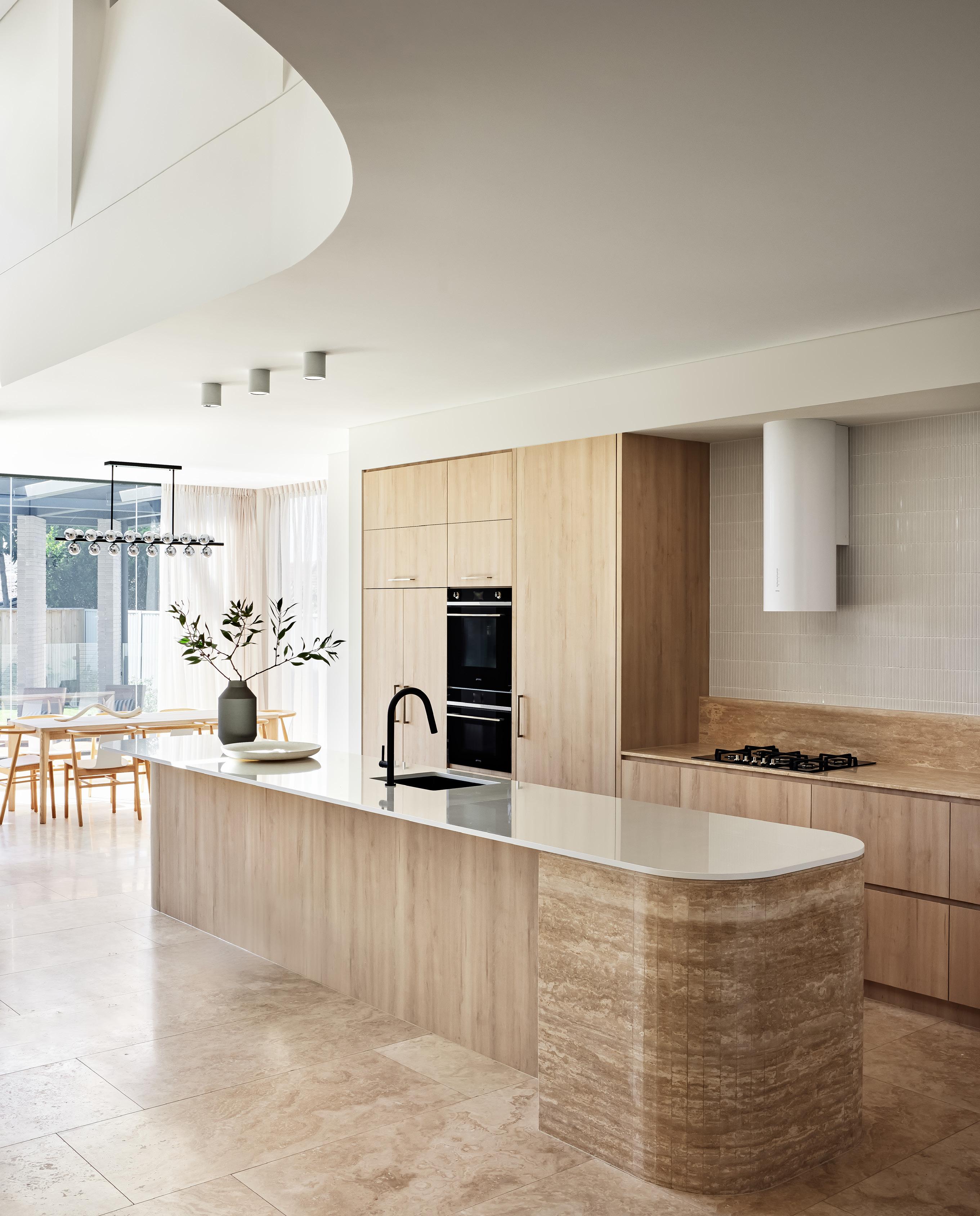
Construction activity in Tasmania’s Water and Sewerage, Heavy Industry including Mining, Bridges, Railways and Harbours, New Houses and Roads sectors are expected to perform stronger over the next five years, relative to the last five. Over the next five years the sectors set to see the biggest contraction in construction are Electricity and Pipelines, Health and Aged Care, Accommodation, Other New Residential (Apartments and Townhouses), construction sector.
$ million pa Roads New Houses Heavy industry incl. mining Bridges, railways, harbours
Water and sewerage
Miscellaneous Industrial
Other (mainly small alterations and additions)
Recreation and other Educational Other commercial Alterations and Additions (large)
Retail/Wholesale trade
Telecommunications Entrainment and recreation Offices
New Other Residential
Accommodation Health and aged care Electricity, pipelines
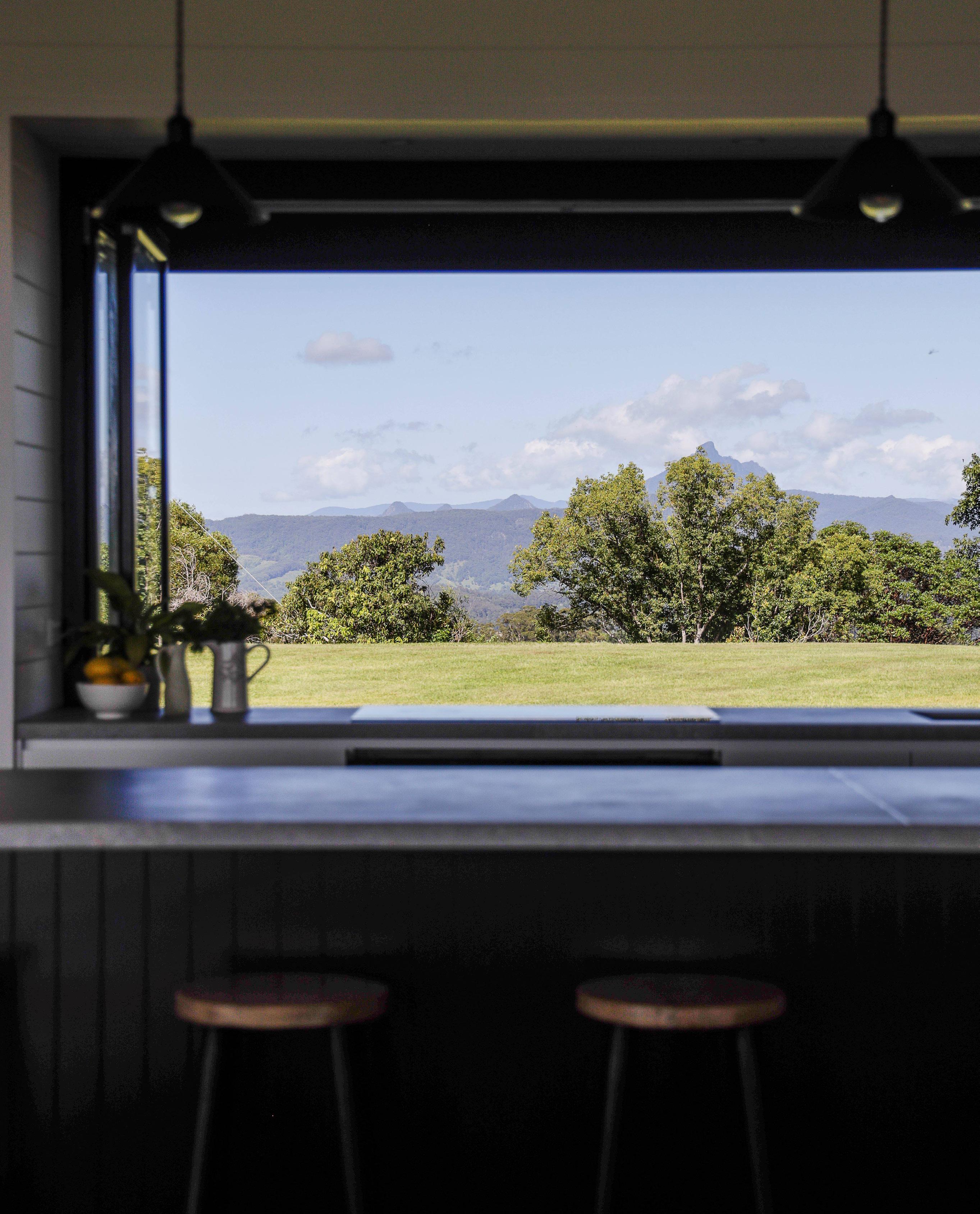
The biggest gains over the next five years are in Bridges, Railways and Harbours and Electricity and Pipelines, as a combination of the strong infrastructure pipeline and continued stimulus in the Residential Building sector drive activity.
The most significant downturn is expected to be in New Other Residential as the residential market comes off a peak. Roads are expected to decline in line with shifting infrastructure priorities towards rail, energy and water. Telecommunications continues to show softness from the heights of the NBN construction.
$ million pa
Bridges, railways, harbours
Electricity, pipelines (mainly small alterations and additions)
Water and sewerage
Industrial Roads
Alterations and Additions (large) Other commercial Entertainment and recreation
Health and aged care Miscellaneous Offices
Recreation and other
Educational New Houses Accommodation
Retail/Wholesale trade
Telecommunications New Other Residential Heavy industry incl. mining

Sub-sectors which are expected to see an increase in work done over the next five years are at the top of the chart below. This is topped off by investments in infrastructure construction especially in Bridges, Railways and Harbours, Electricity and Pipelines and Water and Sewage and Roads.
Sub-sectors which are expected to see a contraction in work over the next five years relative to the last five years are at the bottom of this chart. Sub-sectors which are expected to see the largest contraction in work done over the next five years are Heavy Industry including Mining, New Other Residential (Apartments and Townhouses), Telecommunications, and Accommodation. As shown, mining dominates all other industries in the chart, as it dominates the economy in Western Australia. This set of forecasts has factored in that the long run decline bottomed out last year and we are now projecting growth in activity. While significant, this growth will not be it.
$ million pa
Bridges, railways, harbours
Water and sewerage Electricity, pipelines Roads Industrial Health and aged care Educational Offices
Other commercial Miscellaneous Alterations and Additions (large) New Houses
Entertainment and recreation
Telecommunications Recreation and other Accommodation
Retail/Wholesale trade
New Other Residential
Other (mainly small alterations and additions) Heavy industry incl. mining

Heavy Industry including Mining is expected to increase by almost 50% in the value of work done over the next five years, driven by activity in the mining sector. Bridges, Railways and Harbours and Roads are also expected to expand as work continues on the tram network and the North-South corridor.
Activity is forecast to increase in value in Recreation and Other. However, this forecast is expected to be impacted by the decision to not proceed with the high-value Riverbank Arena project. Education is also expected to increase, with five new technical colleges to be built across South Australia in the next four years.
New Houses, Large Alterations and Additions, and Other (Mainly Small Alterations and Additions) are also expected to increase in value, whereas New Other Residential (Apartments and Townhouses) is expected to decline slightly overall when compared to average activity over the previous five years. The value of activity in Telecommunications is expected to decline in value, as in other jurisdictions, as the NBN roll out winds down. Declines are also expected in Water and Sewerage, and Retail and Wholesale Trade.
Heavy industry incl. mining
$ million pa Roads
Health and aged care Recreation and other New Houses Educational
Other (mainly small alterations and additions)
Offices Miscellaneous Industrial Bridges, railways, harbours
Electricity, pipelines Other commercial
Alterations and Additions (large)
Entertainment and recreation
Accommodation
Water and sewerage
Retail/Wholesale trade
New Other Residential
Telecommunications
Average last 5 years Average next 5 years
500 1,000 1,500 2,000 2,500 3,000
Source: ABS and ACIF CFC

Heavy Industry including Mining is expected to increase by almost 50% in the value of work done over the next five years, driven by activity in the mining sector. Bridges, Railways and Harbours and Roads are also expected to expand as work continues on the tram network and the North-South corridor.
Activity is forecast to increase in value in Recreation and Other. However, this forecast is expected to be impacted by the decision to not proceed with the high-value Riverbank Arena project. Education is also expected to increase, with five new technical colleges to be built across South Australia in the next four years.
New Houses, Large Alterations and Additions, and Other (Mainly Small Alterations and Additions) are also expected to increase in value, whereas New Other Residential (Apartments and Townhouses) is expected to decline slightly overall when compared to average activity over the previous five years.
The value of activity in Telecommunications is expected to decline in value, as in other jurisdictions, as the NBN roll out winds down. Declines are also expected in Water and Sewerage, and Retail and Wholesale Trade
$ million pa
Bridges, railways, harbours Miscellaneous
Other (mainly small alterations and additions)
Recreation and other Industrial Educational Other commercial Water and sewerage
Telecommunications Offices
Health and aged care Alterations and Additions (large)
Accommodation
Entertainment and recreation New Houses
New Other Residential
Retail/Wholesale trade
Electricity, pipelines Heavy industry incl. mining
Roads 200 400 600 800 1,000 1,200 1,400 1,600
Average last 5 years Average next 5 years
Source: ABS and ACIF CFC
 Designer: Chris McCabe
Designer: Chris McCabe
A mix of construction sectors are expected to increase over the next five years. The top performing sub-sectors are expected to be in Recreation and Other, Other Commercial and Health and Aged Care.
Sectors expected to see the largest declines in the next five years relative to the last five years are New Other Residential, Bridges, Railways and Harbours, Education, Retail and Wholesale Trade and Accommodation. Railways are expected to decline relative to spending in the last five years because the amounts committed for the next stage of the light rail are lower than the amounts spend on stage one.
Recreation and other
Other (mainly small alterations and additions)
Health and aged care
Electricity, pipelines Other commercial Offices New Houses Industrial Miscellaneouos
Alterations and Additions (large)
Water and sewerage Heavy industry incl. mining Entertainment and recreation Roads
$ million pa
Accommodation
Retail/Wholesale trade Educational
Bridges, railways, harbours
Telecommunications New Other Residential
Average last 5 years Average next 5 years
200 400 600 800 1,000 1,200 1,400
Source: ABS and ACIF CFC

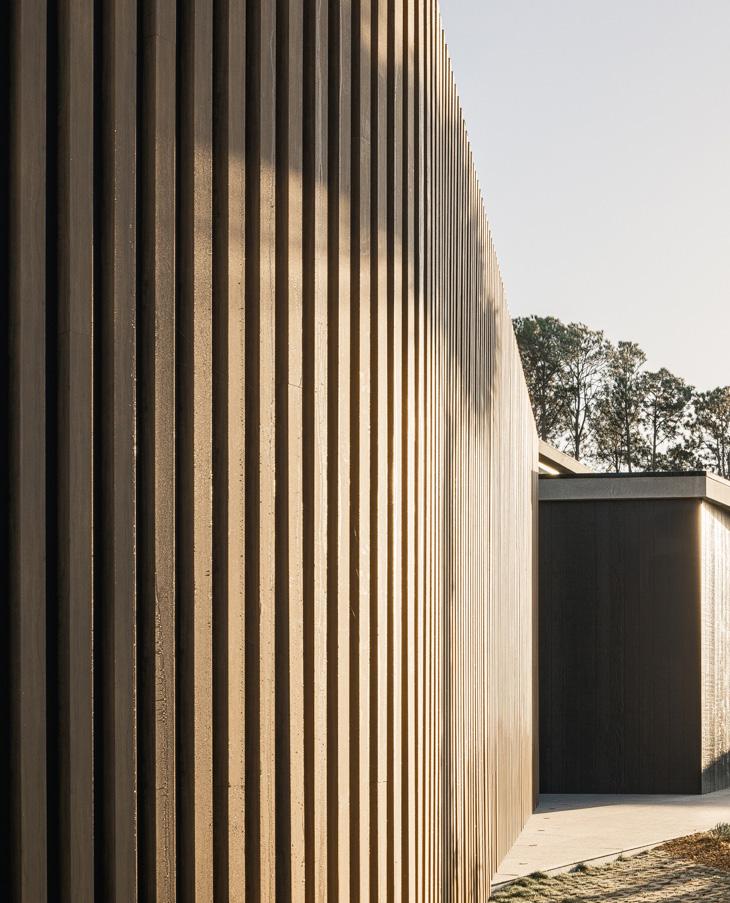
Reece Keil Design's client wanted a uniquely designed home in both layout and aesthetic to stand out among the 'on trend' homes in a gated community on the Queensland Gold Coast. The home was to respond to its aspect and outlook in order to maximise its desirability for resale on the luxury real estate market.
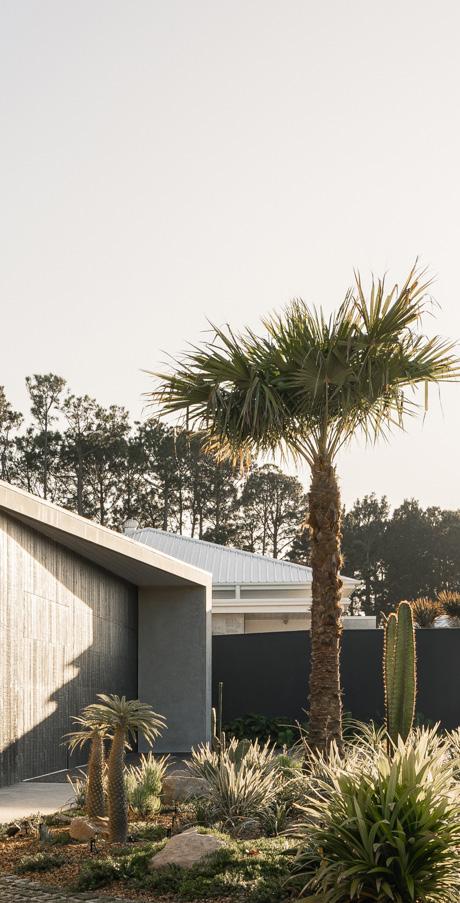
While retaining privacy, the home was to be welcoming of northern light while drawing the eye to the golf course view to the west. Budget was tight and needed careful management to prevent overruns.
A row of tall pine trees bordering the golf course offered the possibility of respite from harsh western sun and, following a shadow study, the design developed from there – arriving at a C-shaped floor plan that hugs the northern aspect and distributes all the qualities of a north-facing home but on a west-facing site. The central courtyard with pool is protected from the south by the bedroom/utility areas of the home.
The home's minimalist form features a mixed palette of textural, moody finishes that extend from outside to inside, including Weathertex Weathergroove Woodsman which is used extensively throughout the exterior and into the interior to provide a timber textured appearance across vast wall surfaces. The painted Weathertex product was specified for it usability, longevity and characteristic aesthetic to enhance the efficiency of the build and the finished appearance of the unique home.
“When painted Weathertex looks like timber,” says Reece Keil, “but far outweighs it in longevity. Builders like it because it's easy to use and it can be joined in various ways to suit an aesthetic. If I'd used a different product at quadruple the cost it wouldn't have looked any better.”
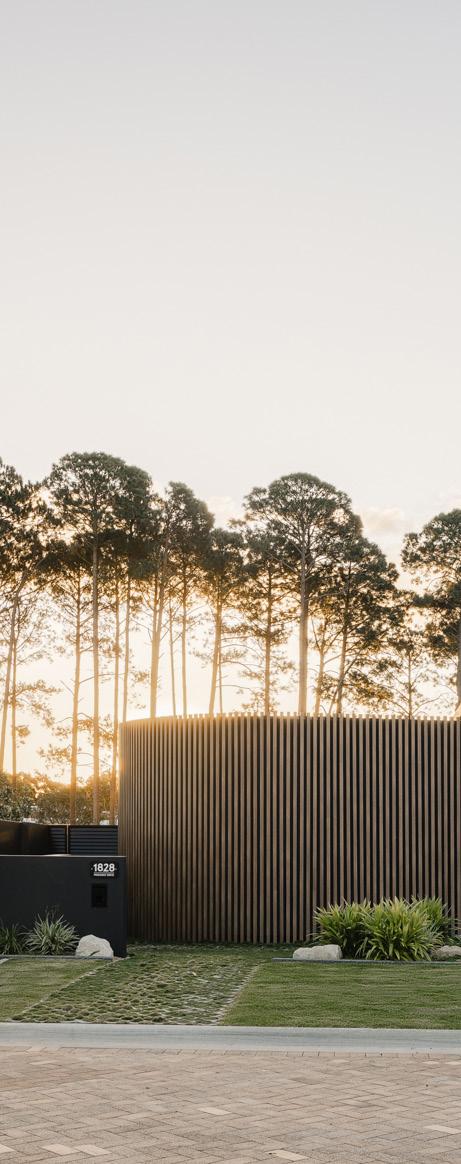
When painted Weathertex looks like timber, but far outweighs it in longevity. Builders like it because it's easy to use and it can be joined in various ways to suit an aesthetic.

We are in a time of enormous challenge and how we respond will have a huge impact on the future of the economy, society and our planet as a whole. With rapid economic development and population growth comes increased pressure on urban centres, infrastructure, services and resources.
With resources being in short supply at an increase rate, we continue to generate record high amounts of waste and emissions. This leads not only to negative environmental outcomes, but also adversely affects our social standards and economic prospects.
However, there is now a growing realisation globally that transitioning towards a lower carbon future by designing and implementing more ‘circular’ economic models represents an opportunity, not only environmentally, but also socially and economically.
Circular economic models are governed by three principles:
1. Optimising the consumption of fixed resources by using renewable energy (solar, wind, hydro power) and natural materials (eg timber);
2. Avoiding ‘use once’ solutions and focus on long-lasting products and applications: and,
3. Recovering by-products and waste (eg Weathertex converts production offcuts into cavity battens.)
A staggering 20.4 million tonnes of construction and demolition waste generated in Australia during 2017/2018 alone, shows the need for direction and action toward a more circular economy within the building industry, especially as more urban areas get developed and population growth is forecast to increase.
According to a recent study by PWC, Australia could generate $1,860 billion in direct economic benefits over twenty years and save 165 million tonnes of CO2 per year by 2040 if we adopt a more circular economy model. The nations and companies that make early progress towards lower carbon, more circular economic models will be the ones to benefit from the shift in mainstream investment towards the growing emphasis on environmental and social impacts.
When it comes to circular economy principles, Weathertex is proud to be recognised as an industry leader. Recently, Stockland Residential commissioned a circular economy survey on their Coomera project in which they used Weathertex cladding. In that survey, conducted by Coreo Pty Ltd, Weathertex circular economy credentials scored 86%, that’s an outstanding result for any manufactured building materials.
By continuing to choose sustainable building materials such as Weathertex cladding, you’ll be setting a pathway to creating more healthy, resilient, positive, and circular built future for you and the planet.
Australian made and owned.
Better than zero carbon footprint.
100% natural: 97% natural timber and 3% natural wax.
Termite resistant: all sugars and starches removed. No added silica, glues, resins or formaldehydes.
CodeMark accredited & Global GreenTag™ certified.
FREE ONLINE samples and Inspirational Tool. Simply go to weathertex.com.au for cladding you can trust, naturally.

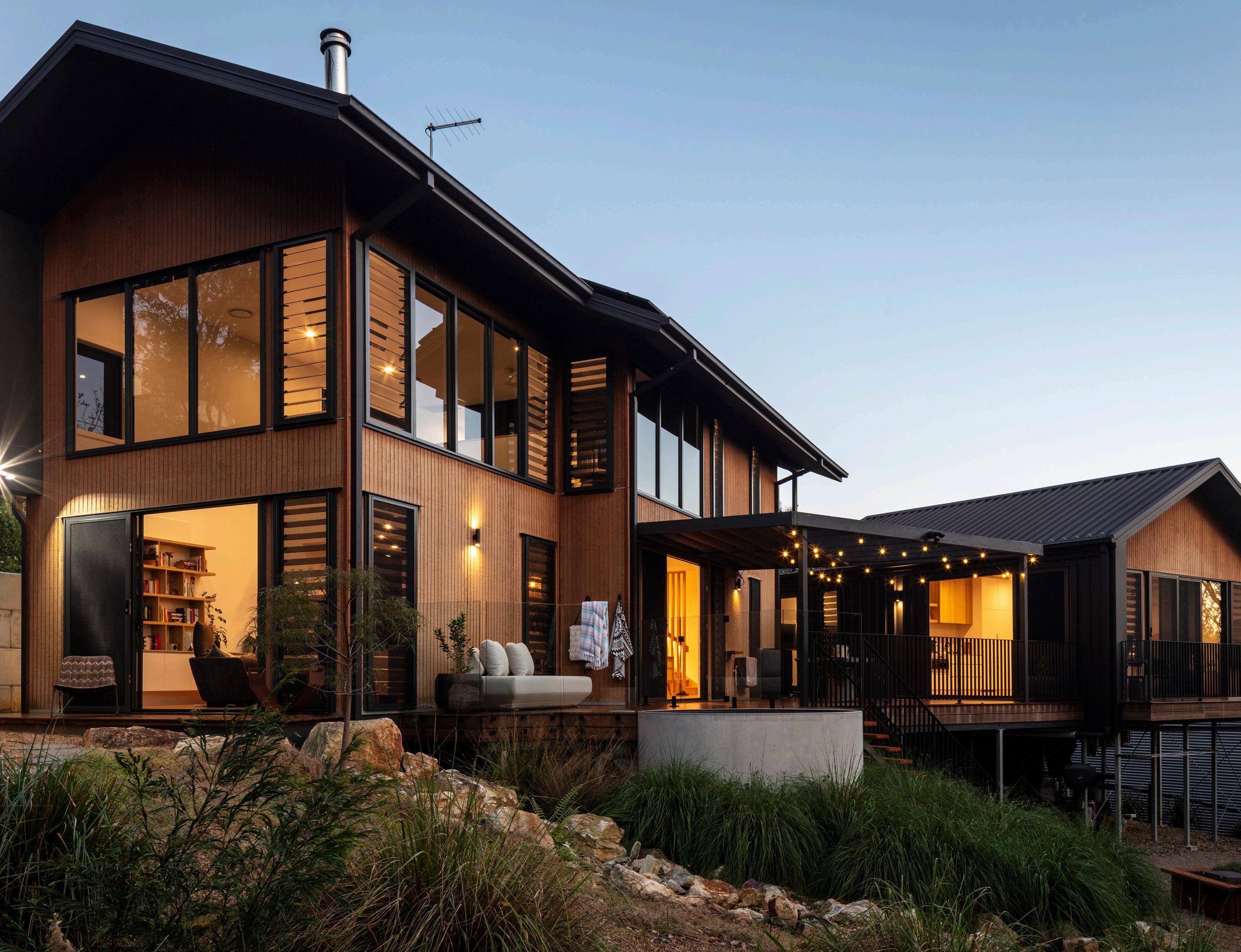
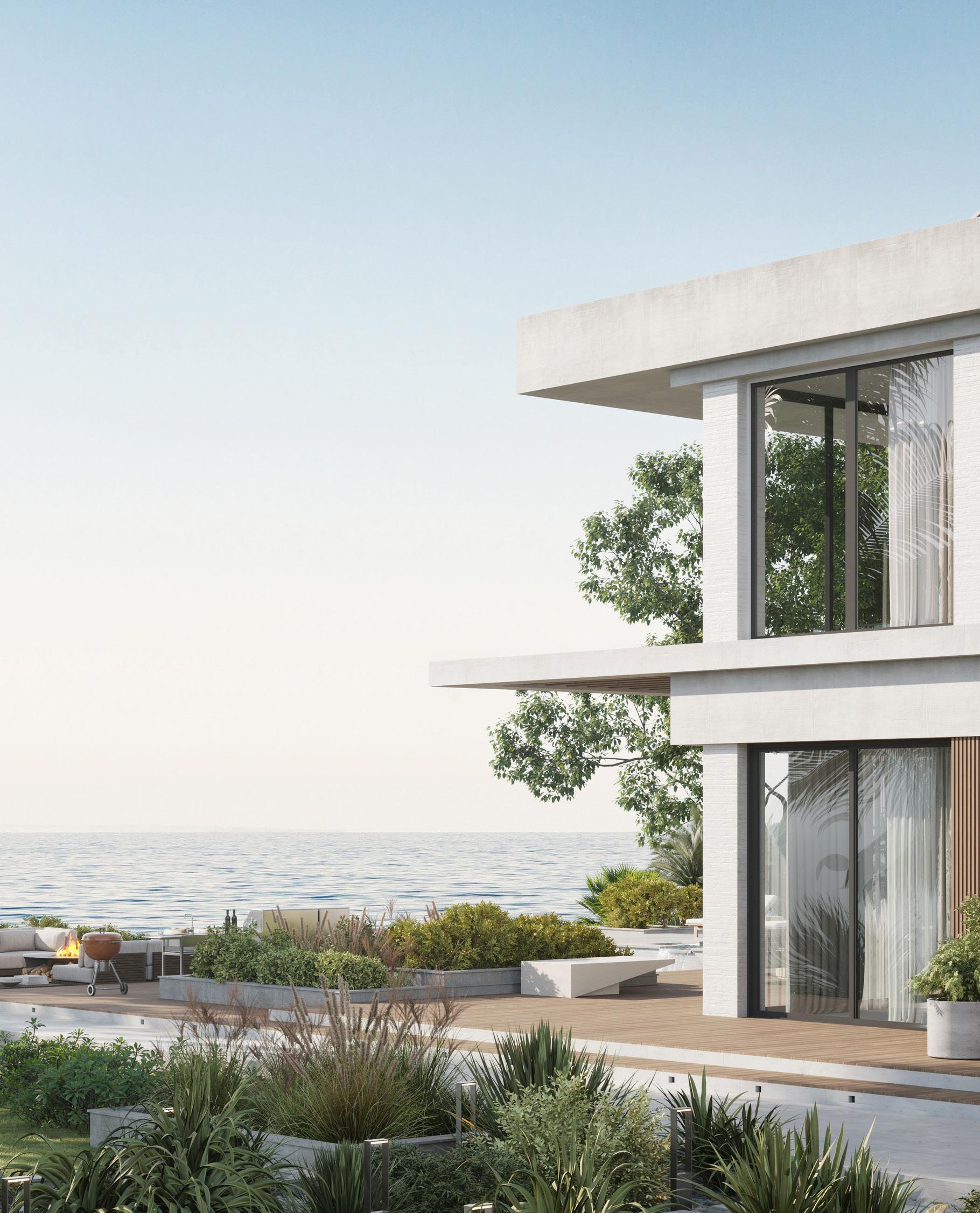
To combat climate change, habitat loss, species extinction and for sake of selfpreservation, we must think more broadly about issues of consumption. Whilst the science of human induced climate change has been hotly debated in the past, the evidence of a rapidly changing climate and its impact across the globe has confirmed the projections from the science of global heating.
Without a shadow of a doubt, the construction and occupation of buildings has a huge impact on the global environment. Therefore, as design professionals we have a requirement to understand our impact and to focus on opportunities to provide solutions. Publicly, across practically all institutions and jurisdictions, any ‘slow contemplation’, has given way to fresh conversations about adaption and impetus to action.
Unfortunately, because collective recognition has been so slow, the gradual shift towards action on climate change has left humanity with no option except to adapt. And yet even ADAPTION still contains a broad spectrum of choices.
BDAA recognises that there is a requirement to elevate the status of issues surrounding sustainability. Although excellence in areas of sustainability has been recognised for some time, policy creation and support for members in their efforts has only increased slowly until now. Recently the BDAA worked with SDG Align, an advocacy group, to create our own Declaration of Commitment to Sustainability.
This means that our organisation is officially committed to advancing issues in relation to:
• UN’s sustainable development goals
• Net Zero carbon emissions
• Triple bottom line accounting, recognising the equality between economic, social and environmental values
• Diversity & Collaboration as well as Urgency
• Leadership, Education & Accountability
• The BDAA will achieve these things through Fostering Leadership
• Educating the executive body and our member community
• Collaborating with stakeholders
• Transparency of governance
These conversations and firm declarations led to the formation of the Climate & Sustainability Advisory Committee, whose members have passionately donated hours of their time to bring about the BDAA Sustainable Design Policy.
So, we’re happy to present to you, an outline of the BDAA’s policy on climate change and sustainability.
The construction and occupation of buildings has a huge impact on the global environment.
As design professionals we have a requirement to understand our impact and to focus on opportunities where we can provide solutions.
He intent of the policy has been to reinforce the high level goals of the BDAA as per the original declaration. This new policy contains an Action Plan, which is a road map towards these goals, and as such, the BDAA will inform & educate its members to empower us in obtaining positive developmental outcomes.
The Action Plan acknowledges that education is key to success. So as a group we’re anticipating with some excitement that our efforts will result in support for members that is targeted towards sustainability.
The policy and any training in support of it, will add ongoing value from the organisation to its members. So we expect that educational needs will be reviewed and realigned as time goes on. Messaging and education, both informal and formal, will be delivered across a range of channels so that no-one will be left behind.
It’s taken 2 years of collaborative effort, with a range people sharing their opinions, experiences and areas of expertise to articulate the magnitude of the challenges our industry faces. Via the combined efforts of a group of passionate volunteers, we have listened to members, consulted with other professionals including, energy assessors, academics, students, teachers, builders, trades, sustainability experts and designers.
With all this talking, reading, writing and discussion we’ve managed to eke out a policy that we’re proud to say will bring value to our organisation and all of us members. The long term goals set within this policy will actually enable us as design practitioners to provide verifiable sustainable outcomes within the following criteria:
• Operational Energy
• Embodied Carbon
• Water management
• Health & Livability
• Resilience
• Waste avoidance
• Circular systems
• Ethical procurement
• Adaptability & Biodiversity
Initially, the policy and the BDAA’s provision of assistance will focus on the sorts of skills needed to meet the increasing performance requirements of NCC 2022.
Whilst the complexity of modeling natural systems on a global scale is fraught with difficulty, the role of fossil fuels within that is elemental, as the science of global heating has known since the 19th century.
We’re currently all responsible for determining a pathway forward and have a short window of opportunity to reduce the amount of carbon being released into the atmosphere and absorbed by our warming oceans and the associated energy imbalance this has created.
Although predicting specific future impacts is uncertain we know there are potentially catastrophic risks and that the actions we take now will either increase or decrease those risks, as well as the quality of life for all species on this planet.
We choose to think that this is a historical moment where we are collectively empowered to play our part in enabling a future that’s worth inhabiting.
All design practitioners have an integral part to play in the transformation of the built environment.
As professionals we have a duty of care; not only to the client but also to the future of our children and to the planet. We must play our part to help enable a future that’s worth inhabiting!
The urgency of the global sustainability challenge requires swift action from our industry.
‘Adaption’ contains a broad spectrum of choices and opportunities.
Our collective actions add up and spread the weight of change across the many instead of the few!
At this juncture (as illustrated by the IPCC graphic) we are at a critical fork in the road! This is just one of many that will be faced in coming years, but each choice will have implications on the choices that will be available to us in future.
We all bear responsibility for determining the pathway forward but we have only a short window of opportunity to mitigate against the worst impacts of climate change.

So how does the BDAA intend to work with the policy?
The action plan will remain agile and the organisation will be responsive to member’s needs whilst maintaining accountability via our collective actions.
BDAA will ENGAGE with Members, industry partners, consultants, clients and all stakeholders.
In the drive for sustainable design excellence and professional outcomes BDAA will Provide educational content with clear and unified messaging, making sure we deliver what is needed when & where it is needed. We’ll continually review and track progress via annual surveys, event participation and feedback through chapter leaders.
To understand where members stood on the issue of
sustainable design, the upcoming NCC changes and how best to support you we conducted a survey in March:
• This will be conducted annually to monitor changing needs on behalf of the BDAA.
• We ask our members directly where they are currently and where they need support.
• The survey is published in the BDAA communities, and emailed directly to every member.
• The results of the last Survey indicated that majority the of members understand that our work has a direct impact on the environment and its ecosystems.
We were looking to gauge the level of understanding of the importance of Sustainability to a design practitioner – whether they are a building designer, performance assessoror other design-based member.
We all have an impact!
In my work as a Building Designer/Thermal Performance Assessor I understand how significant the impact of my decisions are on climate change?
46% Strongly agree
Do you feel well prepared to ensure your projects will achieve compliance with the increasing Thermal Energy Performance requirements under NCC2022?
20% Yes, I feel confident about the NCC2022 changes and I can meet or exceed those requirements.
37% No. I’m unaware of the new changes and / or I’m confused about how we’ll be affected by the new requirements.
If you had support from the BDAA, would you work to design more sustainable buildings?
7% Strongly disagree 8% Neutral 1% Disagree 4% Strongly disagree
11% Neutral 45% Strongly agree 38 | By Design 2022
A few key points that came out of our initial survey.
• There is an overall sense of initial confidence, but we asked some more questions to clarify.
• There is an overall understanding that what we do will impact the environment short and long term.
• There is a consensus that we must create momentum towards fast-paced adaption!
• The standout number here is that only 20% of members feel they can achieve the upcoming minimum standards. This is a very good indication that members need assistance in reaching the new standards.
• We need to design better than the minimum standards because the minimum standard is only the starting point on the trajectory to Net Zero which housing has to achieve.

• If supported with education programs 84% would try to achieve better outcomes.
So broadcasting educational content on all channels should be one of BDAA’s major goals.
We are working hard to develop educational support for all members to make not only make the minimum standards achievable, but to do much better than minimum.
To enable all members to be a force for change and achieve great things the BDAA will help you understand and calculate things like “operational energy”, “embodied carbon”, “circular systems”, “social design” and on-site verification etc. We want and need this generation of designers and assessors to be the change we need to see.
We want to keep surveying members annually, and we need your voice!
This is your opportunity to tell us what you need, and how we can support YOU.
We also need your colleagues in the Chapters, to promote the annual survey to add to its value and relevance to our members.
We’re very lucky to have a group with diverse backgrounds and expertise. We have Building Designers, Thermal Performance Assessors & trainers, Sustainability Consultants & environmental engineers.
And we’re even blessed to have some nonBDAA members on board. It’s easy to see how the climate change threat has created division in society, but there’s just as many examples where the challenge is bringing different groups together. And the common link is that we all share a passion for sustainability.
Comittee member’s include: Kirstie Wulf, Ueli Schmied, Lachlan McEwen, Chris Lockhart-Smith, Brett Grimley, Esther James, Clyde Anderson, John Hatch, Tracy Graham, Dick Clarke, Mark Davis, Tom Hughes, Richard Sapwell, Arjun Adhikari, Michael Drage, Jamie Harris.
And other external members: Jeremy Rose, Dr Janice Birkeland, Dr Clyde Anderson.
Building Designers Association of Australia’s (BDAA) vision is to unite the design industry to deliver a livable, green, efficient and smart built environment, delivering the economic, social and environmental benefits of sustainable design.
Driven by the global megatrends of sustainable development, urban densification and connected technology, Australia’s building design and energy efficiency industry is facing a period of significant change and opportunity.
Booming real estate prices and urban sprawl have redefined the Australian dream, as more of us swap traditional quarter acre blocks for apartment living to be near work, friends and amenities. Swelling cities face a series of wicked challenges including increasing energy use, water shortages, stormwater flooding and urban heating. Building design that addresses these issues at the source can rebalance the whole urban system to solve these issues rather than add to them. Uniquely positioned to reimagine urbanisation as it transitions from linear to circular design, the building design industry will play an increasingly powerful and influential role in ensuring the built environment of the future is home to healthy, inclusive, sustainable and prosperous communities. As the voice and trusted advisor of Australia’s building design sector and energy efficiency industry, the BDAA is committed to educating, inspiring and supporting its members to lead the way and reap the economic, social and environmental benefits offered by sustainable development and design.
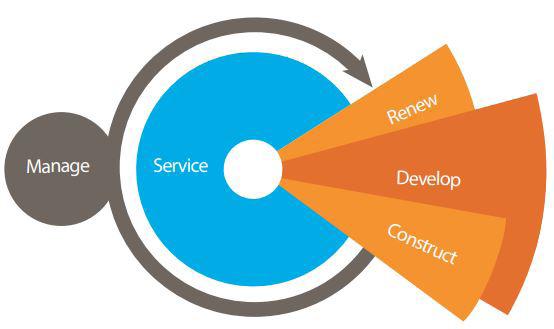
While issues like climate change, waste and renewable energy often steal the headlines, the BDAA defines sustainable development as an approach to designing the built environment that balances economic, social and environmental benefits.
The only way to make significant and lasting change is to ensure sustainable development works for all stakeholders in the built environment ecosystem from designers, thermal performance assessors, architects, engineers, builders and landscapers, to planners, consultants,
product manufacturers, energy & sustainability experts, government and industry associations.
As design professionals, the biggest individual contribution you can make to achieving a sustainable future is through the whole-of-life impacts of client projects. Sustainable development can also make buildings more resilient to physical impacts from climate change by providing multiple options to respond to threats such power failure, water stress and heat stress.
As an association, the BDAA has committed to incorporating sustainability and circular design into all decisions. Underpinning our vision are the United Nations Sustainable Development Goals (SDGs), a shared blueprint for peace and prosperity for people and the planet, now and into the future.
Sustainable buildings are not only more comfortable, inclusive, healthy and harmonious, they create desirable residences that are more valuable economic assets.
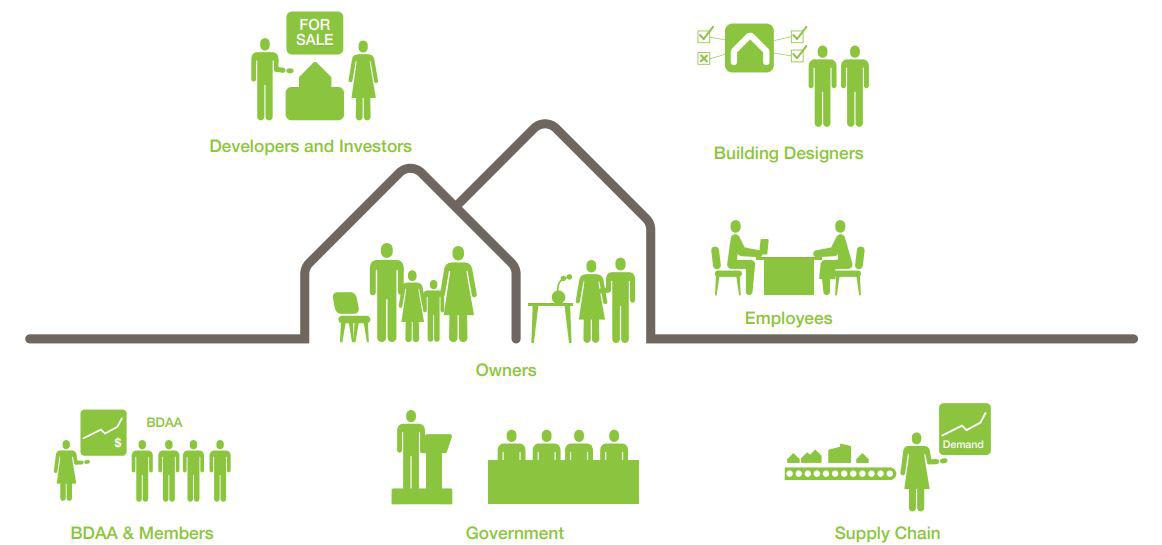
Well-designed buildings are more enjoyable, last longer, have lower running costs, command premium rent, offer greater ROI and generate broad long-term social benefits.
Circular developments deliver the environmental benefits of reduced impacts of waste, water, building materials and energy, and are in high demand and cheaper to run, operate and maintain.

Intelligent technology like building information modelling, integrated digital design, robotic manufacturing and home automation can drive practical and sustainable solutions.
The bottom line is that residential, commercial and industrial clients are increasingly demanding sustainable developments, and they are also prepared to pay a premium to live, work and play in livable, green, efficient and smart communities.
With buyers and investors focusing on ethical and sustainable investments, the results are higher asset prices and rental yields.
Attracting and retaining talent, especially younger staff, now requires alignment in values and a commitment to a sustainable future.
Embracing sustainable projects and business practices not only increases your appeal, it means happier clients, better buildings, enhanced reputation and a stronger business.
Growing demand for sustainably developed materials, services and solutions is an opportunity to stand out and grow your business.
People demand action on social justice and climate change. Businesses that demonstrate progress will attract customer loyalty and support.
Built form impacts almost every government responsibility from education to healthcare and needs to be planned, designed and regulated to meet community needs.
Thermal Performance Assessors Assessor will provide expert guidance regarding building materials, window and other products as well as other specifications to create healthier, comfortable and better performing buildings.
Through education, advocacy, leadership and recognition, we will raise the profile of the building design sector to help members profit and prosper.
One thing is certain, the only way we can overcome these global challenges and all benefit from the economic, social and environmental benefits of sustainable development is for the building design sector to work together and across the built environment supply chain.
Pivotal in conceiving the built environment of tomorrow, designers can raise the bar, set priorities and drive change starting with today’s project. As trusted experts, designers can inspire owners, developers, investors, builders, peak bodies, educators, product suppliers and service providers to embrace the vision. This influential role gives our industry the opportunity, and responsibility, to take a collaborative role in designing the built environment of the future that is circular and sustainable by design.
Let’s rise to the challenges of today and tomorrow. From comfort and safety, to maintenance and affordability, the most common issues with the built environment can be designed out by applying circular design principles from day one, which makes life better for everyone.
Increasingly, we envisage a major opportunity for interested designers to step into the critical role of sustainable development experts, becoming trusted advisors on broader topics like the Passive house principle, net-zero construction, thermal performance, water management, circular design, approvals and green infrastructure. That’s why, as part of our vision, the BDAA is working towards developing deeper involvement of the building design sector in the construction, management, service and renewal phases of the built environment cycle to ensure our visions become reality without compromise.
1. Understand
Read, learn, upskill and discuss sustainable development as much as you can. BDAA will share education, advice, tools and resources.
2. Assess
Start by benchmarking your performance and gaps. Take our Ready Reckoner for a personalised balanced scorecard and practical tips.

3. Commit
Sign BDAA’s public declaration of commitment to sustainable development and embrace action, accountability and transparent reporting.
4. Take measurable action
Actions speak loudest. Through measurement and transparent reporting, we’ll publish data-driven evidence of our progress, individually and as an industry.
5. Be Recognised
BDAA is developing a formal accreditation program that enables members to publicly prove their commitment, action and results.
Share successes and publicise outcomes to inspire others to join the movement to create a sustainable future for all.
To begin or accelerate your journey towards sustainable development, we invite you to join us at www.bdaa.com. au/sustainability/ where you’ll find resources and tools.
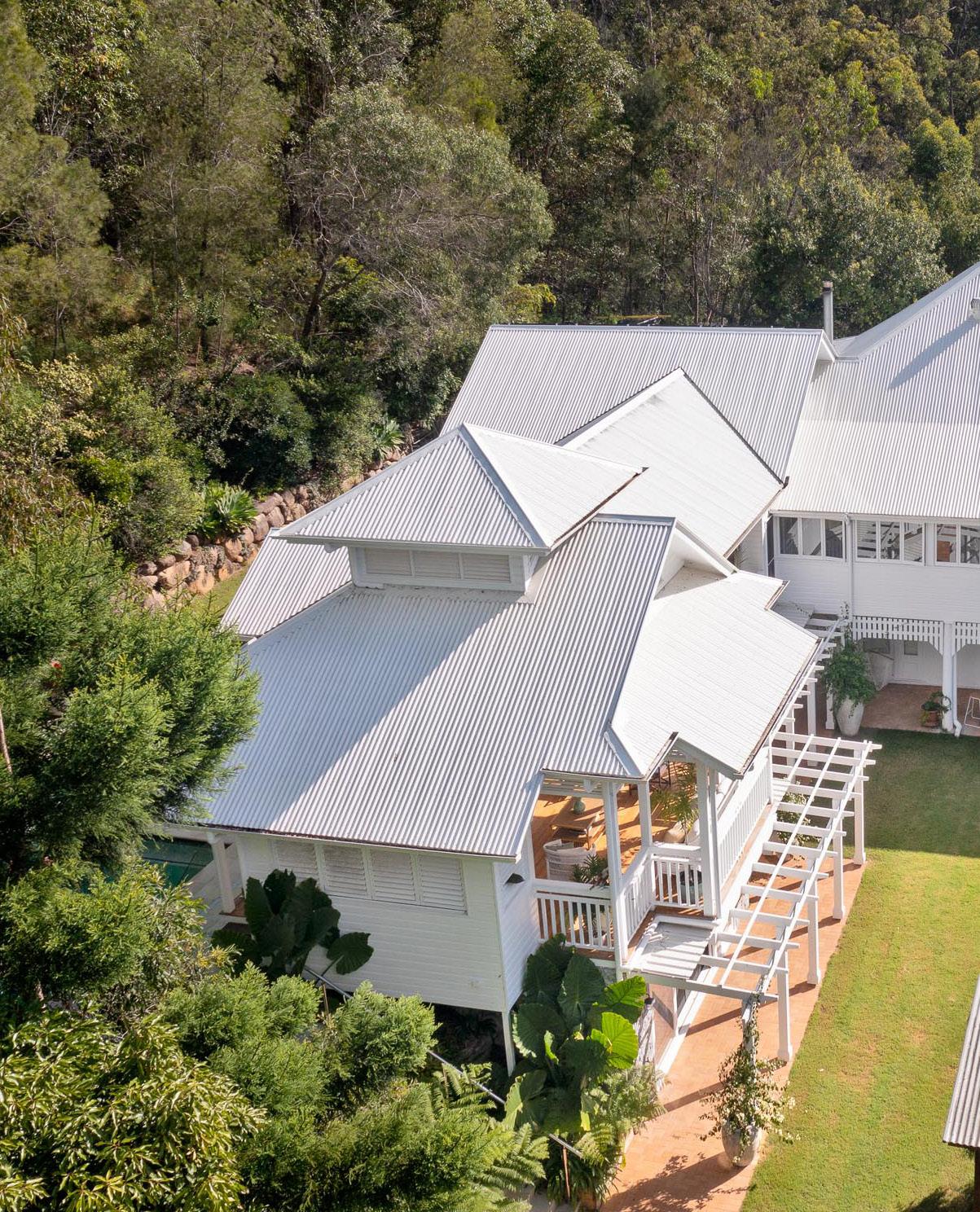
The owners of this spectacular home in Brisbane renovated and extended their traditional Queenslander, to better meet the needs of their large family, and love of entertaining. Careful consideration ensures the home meets all functional aspects of the brief, while remaining true to its heritage by incorporating sympathetic materials such as LYSAGHT CUSTOM ORB® roof cladding.

In delivering the successful project, the design team combined features of the Hamptons and Plantation styles within the existing Queenslander home. Timber detailing, louvres and shutters allow air flow, light and interest to the design while also giving a Caribbean/tropical feel.
The roofline of the extension was designed to blend with the existing, using high roof pitches that were then clad in CUSTOM ORB® shaped from COLORBOND® steel in colour Surfmist®. This traditional corrugated profile provides authenticity, while the pitched substructure creates high volume within the ceilings to promote air flow and added aesthetics.
Extending the rear of the home, raising the roof line and ceiling height, and adding extra windows in the living area allows greater light into the home. The kitchen redesign adds plenty of storage space and encourages both informal and formal dining options, while ensuing good flow to the large decking area – a generous outdoor kitchen also provides the family with amenities that allows them to entertain outdoors in style.
The home’s new layout has also improved connection to the beautiful outdoor vista and pool area. And further adding to the lifestyle is an alfresco area that can be opened or closed, letting the family host yearround ‘get togethers’ and parties.
The CUSTOM ORB® roof cladding, used on the project is available in a broad range of COLORBOND® steel colours as well as in a traditional ZINCALUME® steel finish, providing architects, builders and homeowners wanting to bring a touch of authenticity to their next projects with boundless options.
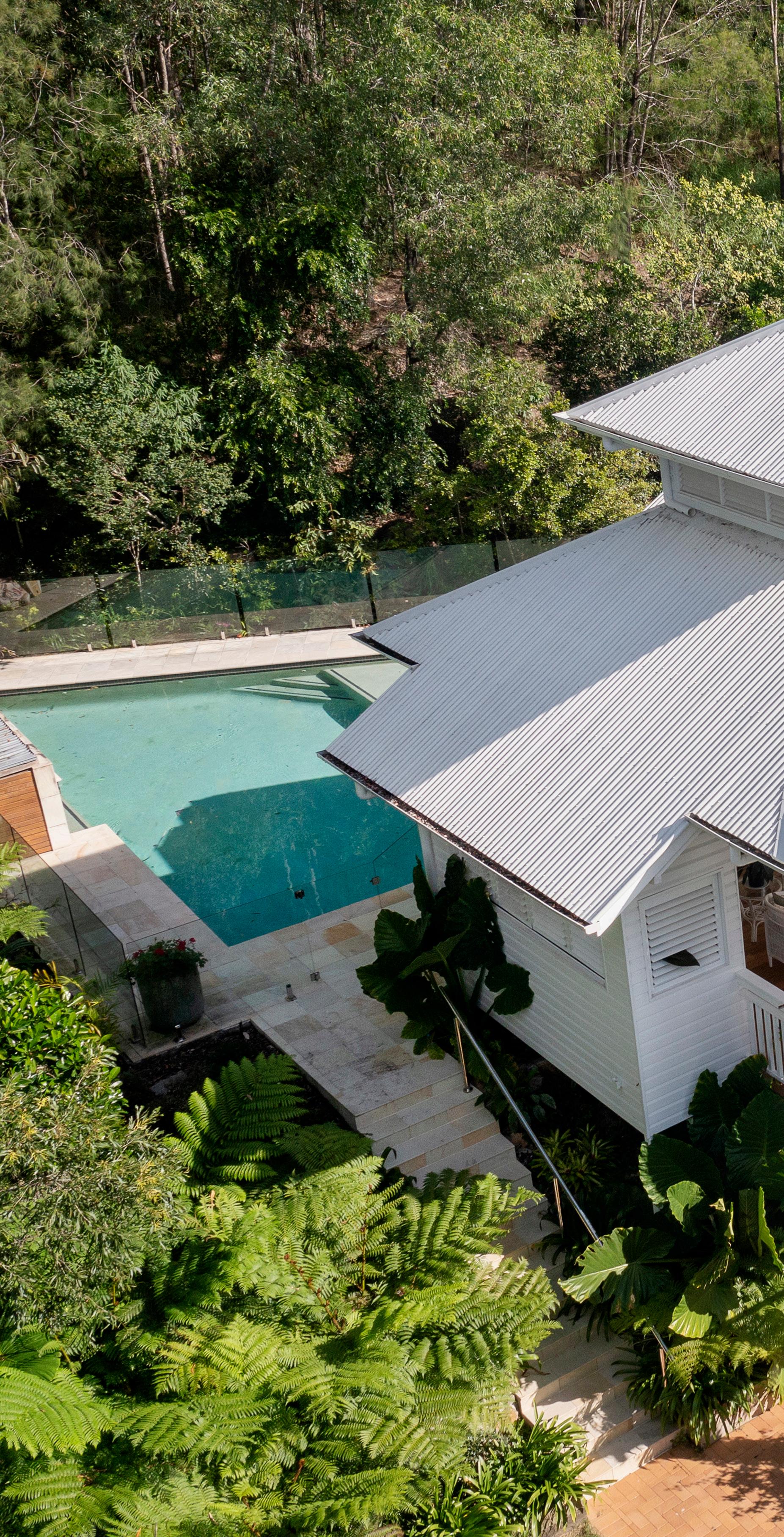
Extending the rear, raising the roof line and ceiling height and adding more windows in the living area allowed more light into the home.

When clients talk about ‘sustainable design’, not everyone is on the same page. For some, it’s about reducing their impact on the environment over the longer term. Others, though, have more immediate goals in mind.
That was the case for the owners of this home in the Melbourne suburb of Balwyn North, winner in the Residential Projects category in the most recent Lysaght Inspirations Design Awards. Director of Chan Architecture, Anthony Chan, says thermal comfort was the driving force behind their interest in sustainable design.
“It was not so much that they were solely focused on sustainability, but they did want to be comfortable without the need for mechanical heating and cooling,” he says. “It was all about a well-performing house that would save them money in the longer term.”
Chan designed a two-storey home with three bedrooms and two bathrooms plus a more private living space on the upper floor featuring a skylight. A guest bedroom and ensuite on the ground floor is off to one side of the entranceway but central to the design is a spacious open plan kitchen, dining living space, characterised by a double height void. To the eastern side of the building, a slender full-length window offers views to the Dandenong ranges.
A simple palette of concrete, timber and steel creates a rhythm for the internal spaces that is at once contemporary and warm while the masculine angles of the spaces are broken up with more feminine curves for the walls of the bathroom and living space upstairs. Chan says the challenge was balancing the desire for privacy with the need for space.
“They really liked that sense of space,” he says. “They are definitely people who like to spend time at home, and they wanted that feeling of space internally.”
To ensure the house performed well, Chan positioned the house on the 2000sqm block so that the main living areas faced north, allowing the polished concrete slab to passively regulate temperatures, keeping the house naturally cooler in summer when the sun is higher and warmer in winter as the slab releases heat into the evening.
A thermal chimney directs hot air up and out of the house via windows on the top floor and the entire house has been
heavily insulated, with the ceiling insulated to R7, the highest insulation batts available on the Australian market right now.
Outside, LONGLINE 305® cladding was the obvious choice, thanks to its versatility, flexibility and reflective qualities.
“The clients really wanted longevity and robustness and we wanted a product that could wrap around the building,” says Chan. “That pretty much narrowed it down to LONGLINE 305® cladding.”
Shaped from COLORBOND® steel in colour Surfmist®, the cladding also reflects, rather than absorbs the heat. “The idea was that they wanted something that would reflect the light and make sure that it didn’t get too hot inside,” he says.
The sloping roof also allowed plenty of space for a substantial photovoltaic system, providing more than enough power for the family. Timber cladding and stacked stone break up the facade, while recessed reveals on the upper windows add depth and a sense of permanence to the home.
“When we do these recessed reveals, it makes it look a bit more substantial and gives it a bit of depth,” Chan says. “The advantage of using LYSAGHT® products is that we’re assured that it’s all shaped from COLORBOND® steel so the flashings are the same colour as the cladding so that it looks like it is wrapping.”
Given Balwyn North was once dominated by farmland and orchards, the choice of cladding was also a nod to the history of the site, albeit a more sophisticated treatment thanks to the taller ribs and sharp shadows of the LONGLINE 305® profile
“When we got there, the old farmhouse was still on it,” Chans says. “It had been butchered over the years, so we designed this as a reference to the history of the site, with a barn-like shape.” And after several months in the house, you could say the new building is already bearing fruit.
“It was always hard to know how well it would perform so I got in touch with the owners a few months after they moved in,” he says. “They said it was amazing all through their first Melbourne winter - the temperature never dropped lower than 19 degrees inside the house. For such a big internal space with a double height void, that was a great result.”

With the new 7 Star requirements rolling through early in 2023, let's take the opportunity to have a look at a recently finished home in Melbourne that fits the 7 stars bill. This is the latest home for one of our own, award-winning Building Designer and Interior Designer Kylie Mitchell and her partner. The brief was simple. Keeps costs down, embrace some compact design principles, keep it environmentally responsible and make it striking and yet approachable. The idea was to create a home that lays between environmental best practice and poorly designed property development fodder. A home that will inspire people to take the next step (or two) towards a more sustainable future.

As always with Kylie's designs, she cuts to the chase and focuses on functionality first and uses a large delete button to eliminate wasted space while still creating a space filled with light and links to private open spaces. This home features sharp lines and a simple single circle, both of which will be reflected through landscaping, artwork and interior fittings and furnishings. Kylie believes that if it can't be done simply and boldly, don't do it all.
The materials chosen and the colour palette show the same bold approach with a full Weathertex exterior featuring 3 different products, including the new Fusion Natural, combined with no nonsense black, white and a dark dusky blue. The resulting aesthetic is simple, strong and striking.
And this home shows us that 7 stars isn't something that is hard to achieve and that you don't have to sacrifice still to achieve it. So what has gone into making this home 7 stars? Simple good design.

All living areas and the 2 main bedrooms face due north keeping the lessor used areas of the home to the southern side. This layout also allows most of the glazing to sit on the northern and eastern elevations, therefore elimination most glazing from the southern and western sides of the building. These are correctly shaded to prevent summer sun heating the internal ground floor solar mass concrete slab and allowing to do it's thing in winter. All windows open to manage cross breezes for heating and cooling on this 2-room deep design as well. All standard solar passive techniques.
So, let's talk glazing and insulation, because this is where things step up a little. All glazed doors and windows are timber framed, double glazed and argon filled. Doors are U-2.6, SHGC-0.53, and the windows U-2.6, SHGC-0.5. Glazing has been kept to sensible sizes and amounts and strategically placed to enhance solar passive qualities. The slab is uninsulated, walls are R2.7 with a cavity and standard wrap, the intermediate floor is R2.5, and the ceiling is a truss with R6 batts and the roof has an R1.3 blanket.
Other features include electric boosted solar hot water, ducted split system air conditioning, a 5000lt water tank and standard energy efficient appliances, all LED lighting, a standard laminate kitchen and 4-star taps.

As you can see, there are no great tricks or surprises to achieve a 7-star home. Did it cost more for the doors and windows? Of course! But these costs were offset
by eliminating unneeded empty space and by not going over the top on fixtures and fittings. It's the smart use of materials, layout and light that created this home 160sq/m home with 3 bedrooms, 2 living areas, 2 bathrooms, a walk-in linen and a butlers pantry. And it has been designed to be flexible should another world pandemic situation arrive as the 2nd living area can be quickly concerted to a 4th office while still allowing for a 2nd office space upstairs.
7-stars is not the hurdle it may appear to be. It could be viewed as the opportunity to promote more efficient and clever design so that money goes to a quality home instead of a flashy one that doesn't perform. And once that quality is achieved, we then use our creative juices to get flashy with simple finishes and products.

The brief for this project was to design a small rear extension and outdoor living areas to an existing cottage perched high on the Illawarra escarpment behind the city of Bulli in New South Wales. The site slopes down south towards the yard and backs onto bushland but is also blessed with outstanding distant ocean views towards the east, only accessible at the existing’s house floor level, away from the sloping natural ground. The design challenge involved providing an extension able to be linked to the yard, the bush and the ocean without feeling disconnected from the original cottage levels.

The proposal opened up the rear side of the existing cottage to a larger living space, laid out in such a way that it can be simultaneously linked to the yard and bush on the rear side via a new covered terrace, as well as to the ocean views towards the east through a long daybed built-in towards the side. Consecutive vertical windows above the daybed frame the ocean views, whilst a corner window provides a hint of views towards the bush. Once on the terrace, a similar vertical pattern is used on the pergola's double posts to frame the bush views. Both vertical patterns can be enjoyed from inside and outside the house.

By placing the corner window as the link between the easter windows and the sliding door towards the deck, says Alex, it tricks the brain into joining the ocean views and bush as one. “When we glance at something, our brain fills in the gap. Here, we have used visual tricks to enhance and maximise the views for the occupants.”


 Words by: Kirsty Wulf
Words by: Kirsty Wulf
The Warreeny house is located at Cape Paterson 150km south east of Melbourne in a Zone 6 Mild Temperate climate. The project won the BDAA 2021 Chris Reardon Memorial Award for Sustainable Residential Buildings for Ashley Beaumont of Beaumont Building Design. Ashely must be onto a good recipe for sustainable buildings because he bookended his success with wins in the same category in 2008 and 2022.

So, what makes a design sustainable, what can we learn from Ashley Beaumont’s Warreeny House and how can we incorporate these principals into our work? The BDAA Sustainability and Climate Change Committee have launched the BDAA sustainability policy which creates an outline of where and what sustainability practices we can pursue, but to look at the how we will examine what Ashley has done with the Warreeny House to create a sustainable award winning design.
In the Warreeny House orientation and location of thermal mass have been used to reduce operational energy. The building is a narrow design with the long axis facing east west. This is an ideal orientation as it allows plenty of room for glazing on the north and minimises the walls facing east and west. Most of the glazing is on the north where the generous 900mm eave can provide shade in summer, but when the sun is lower in winter it can enter the house through these windows warming up the polished concrete floor and reverse brick veneer walls. Importantly he has not overglazed the north elevation keeping the north glazing to floor area below 20%.
How this relates to operational energy is that by allowing the sun into the house when you want to warm the space and excluding the sun when you want to keep the house cool the internal temperature of the house is moderated through the use of solar passive design. The hot afternoon sun from the west can often overheat houses. In this design Ashley has placed the garage on the west providing effective shading to the western wall of the dwelling and shade to the dwelling entry. The design achieved an energy rating of 8.5 stars.

The house also generates its own electricity with a 6.6kW PV solar system on the roof teamed with a 4.8kW battery. The house is all electric with an induction cooktop and a Sanden heat pump hot water system. The house has been fitted with a small Daiken 7 star split system air conditioner but the owners reported only using it on one day in the last 12 months. The effectiveness of good design is shown in the running cost for the Warreeny house with this all electric house having an electricity cost of less than $2 per day.
Low reliance on external energy for heating or cooling provides resilience if electricity is unavailable for a period. The property is rated BAL 19 as well as meeting the construction requirements for this bushfire rating the landscaping has been selected to reduce bushfire risk, and uses local native plants.
Another aspect of the BDAA sustainability policy is reducing embodied carbon. Ashely has done this is the Warreeny house by carefully specifying the materials used. Weathertex has been used for part of the external cladding. Weathertex is a low embodied energy cladding material, it obtains all of its material from PEFC local new growth Australian hardwood forests.

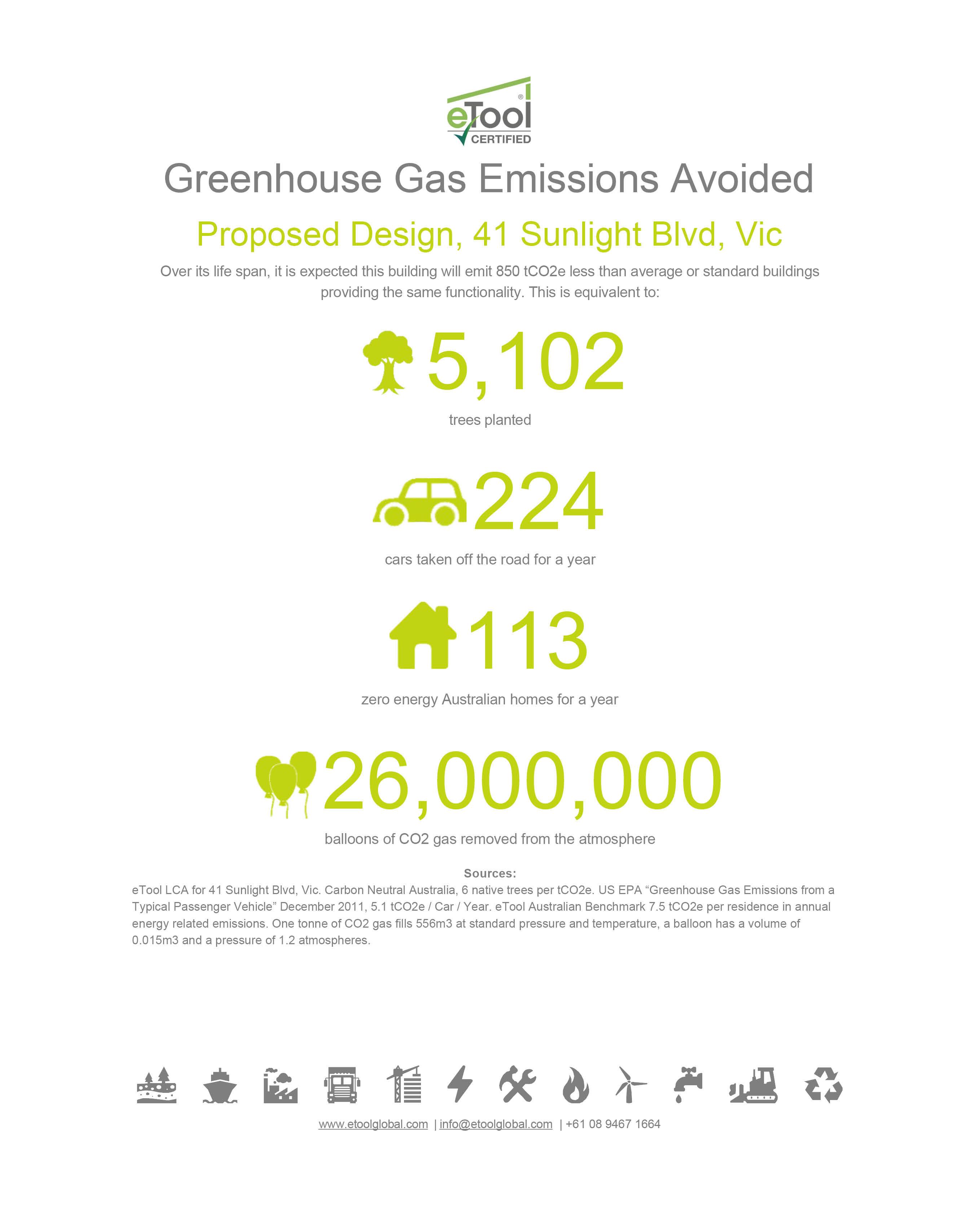

Weathertex has Global Green tag Platinum Certification for its natural range and Gold for its pre primed products. Third party certification is important to look for to verify a manufacturers claims. The frames and trusses used were from plantation timber.
The Warreeny project also uses blocks from The Natural Brick Company. That are a non fired block that uses less energy in their manufacture than fired bricks. Ashely used The Natural Brick Company Macquarie Brick in the Warreeny house, which is made up if 50% recycled woodchip, which is sourced from single use pallets. The woodchip is mixed with Portland cement, fly ash and sand. The fly ash is a resuse of a waste product from coal fired power stations. Many of the product specified in this project either contain a recycled content or can be reused or recycled at the end of the building’s life, which will hopefully be a very long time in the future.
While the project does use a concrete slab on ground, that has high embodied carbon, Ashley made sure that the concrete had a recycled content but also that it serves multiple purposes providing internal thermal mass to regulate the indoor temperature as well as providing a durable and low maintenance floor.


An e-Tool life cycle assessment was carried out on the design calculating the greenhouse gas emissions over the whole life of the project. The Design Embodied Carbon showed a saving of 9% and the Design Operational Carbon a saving of 137% over the average OECD benchmark dwelling, giving a Total Design saving of 106%.
Ashley has considered ethics in his product procurements and for the last 5 years has focussed on using products made in Australia. When it came to choosing the solar PV he specified solar panels manufactured in Australia, which will support the development and continuation of local manufacturing.
Ashely used The Natural Brick Company Macquarie Brick in the Warreeny house, which is made up if 50% recycled woodchip, which is sourced from single use pallets.
Waste has been avoided by designing the house in 900mm increments to match the sizes the building products came in. Ashely advises designing to the products that you use to minimise waste and provide cost effective designs.
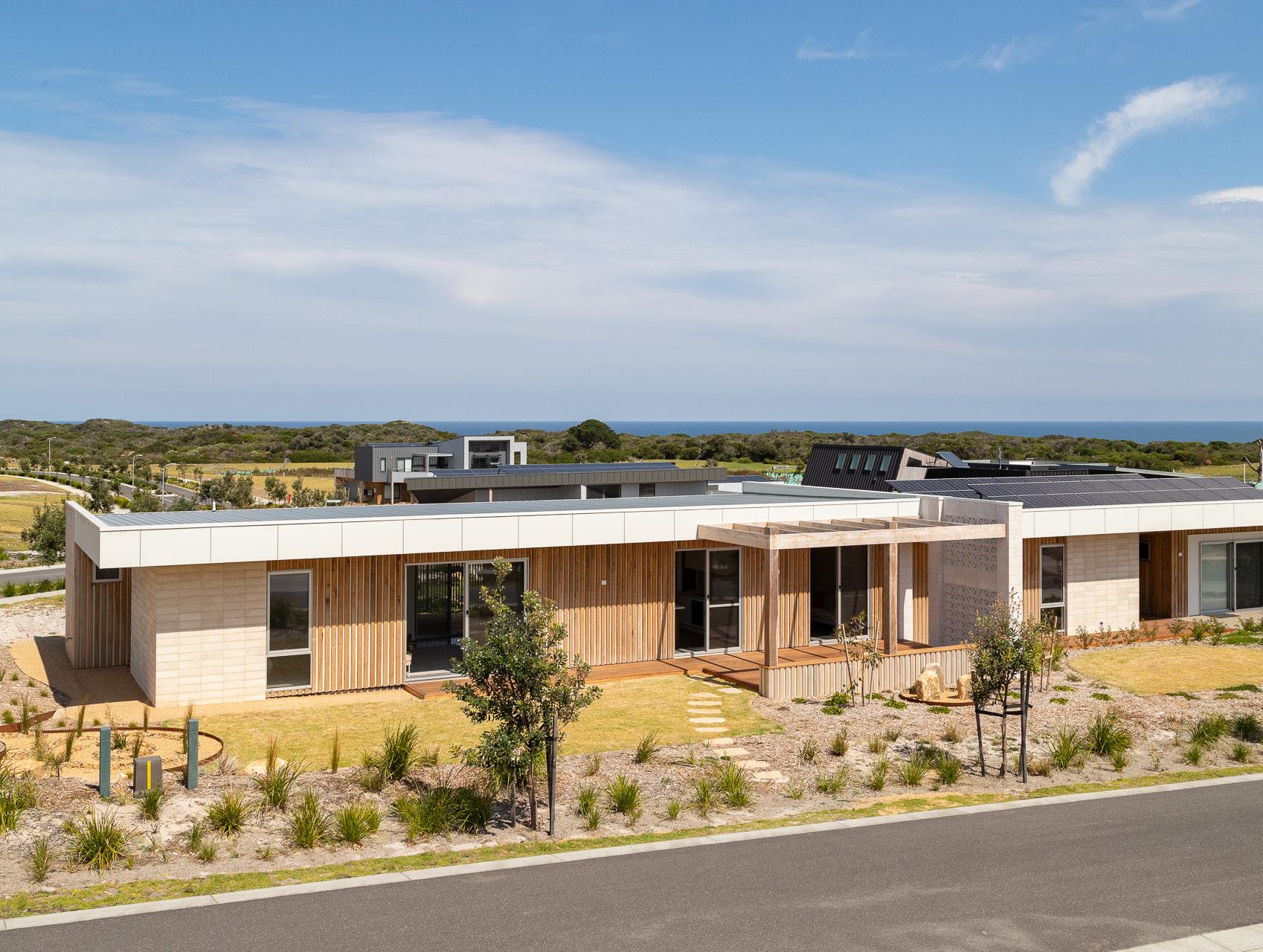
Consideration was given to water by the inclusion of a 10,000L rainwater tank collecting all the water from the roof for use in garden watering and toilet flushing. The plumbing fittings were all low water use and the landscaping design uses indigenous low water species.
Health and liveability were considered when designing the Wareeny house. Product specification has ensured
no formaldehyde in products and finishes and the use of low or no VOC paints and finishes, with several products left in their natural state, such as the internal brickwork, ensuring good quality indoor air. The design has wider than standard hallways and doors and a no step shower, ensuring ease of access if occupant mobility is limited.
This simple and elegant design show that sustainable design does not have to be complicated and it does not mean a compromise on style. Ashley says that they key is getting things right at the start with good orientation and solar passive design, meaning appropriate shading and calculating your glazing size according to the orientation and floor area.
A Life Cycle Assessment has been carried out on the proposed design calculating the greenhouse gas emissions over the whole life of the project as per EN 15978 scope and system boundary. The benchmark chosen to compare against is the OECD International Residential Benchmark Weighted (x10 Dwellings). The results are summarised below:
Design Embodied Carbon 887 kgCO2e per year per Occupant. Saving of 9%

Design Operational Carbon -1,133 kgCO2e per year per Occupant. Saving of 137%


Total Design -246 kgCO2e per year per Occupant. Saving of 106%

The Ratings Explained:
Bronze: 0 – 30% Greenhouse gas emissions saving against the applicable benchmark


Silver: 30 – 60% saving
Gold: 60 – 90% saving

Platinum: 90% saving plus gold in all categories for overall Platinum rating.

Sustainable and green homes aren’t exactly a new trend. And yet, the demand for sustainable housing solutions continues to grow, with the shift in public perception contributing to the increased acceptance and adoption of ‘green’ building practices.
Sustainable homes aim to reduce the ecological footprint on the environment, not just during the construction but in the embodied energy used in the creation of the building materials themselves, and in the design of a building that reduces greenhouse gas emission for the home’s life span.
Fortunately, one such building material already exists and has the potential to substantially reduce greenhouse gas emissions in the building sector, slash waste, store carbon, insulate the home, and uses relatively less energy in its manufacture.
It’s called timber.
Australian homeowners are calling out for sustainable living as we move towards a net zero future. The Australian construction sector is one of our major polluters and responsible for 492 million tonnes of carbon emissions each year. Thankfully, timber is a carbon positive building material, meaning it stores more carbon than is used in its manufacture. It is the most sustainable building material available and is a truly renewable resource that boasts a lower embodied emissions than other building materials such as concrete, aluminium and steel.
In fact, using one cubic metre of timber in a build results in 0.8 tonnes of C02 being locked away within the building. This is because plantation pine absorbs carbon from our atmosphere and about half of each tree is stored carbon that remains in the timber for the life of a building.
Timber has been used for a myriad of applications in building for thousands of years, from decking, framing, cladding… it’s a versatile material. However, with the advances in locally manufactured glue laminated timber (GLT), we are now seeing a trend toward engineered timber use in buildings that require high load applications and often these applications are visually expressed adding to the beauty of the building.
GLT beams are created through the process of layering and gluing laminates together to produce larger and longer length members.
This not only makes GLT beams stronger than solid timber, but due to its superior strength to weight ratio means that in most instances GLT is a suitable replacement for steel – assisting in reducing a buildings carbon footprint. There is some poetry in the fact that GLT is often chosen over steel and concrete for its green credentials but its appearance can add to the biophilia in the built environment – helping individuals feel more connected to nature and the earth that sustainable buildings work to protect.
 JAMES HARDIE
JAMES HARDIE

Architect
Small in footprint but big on ambition, this colourful creative refuge responds to a challenging bush environment on the victoria coastline.
Located in the small seaside village of Walkerville, the Jackie Winter Waters retreat designed by architect Imogen Pullar sits on a steep, bush-strewn hillside, overlooking South Gippsland’s spectacular coastline and the rolling surf of Waratah Bay. In an environment with a high bushfire risk, the building envelope needed to be fire resistant, with a robust exterior that is made playful by a colourful mural which peeks out above the treetops.
The Axon™ Cladding by James Hardie adheres to Bushfire Attack Level (BAL) requirements, up to BAL40, and also becomes the canvas for a hand-painted artwork. Entitled Deep Drift, this 3D mural offers an unexpected conversation starter that engages visitors’ curiosity at the front door. Symbolising the power and beauty of the natural environment, it is the work of local artists April Phillips, Beci Orpin, Carla McRae and David Booth.
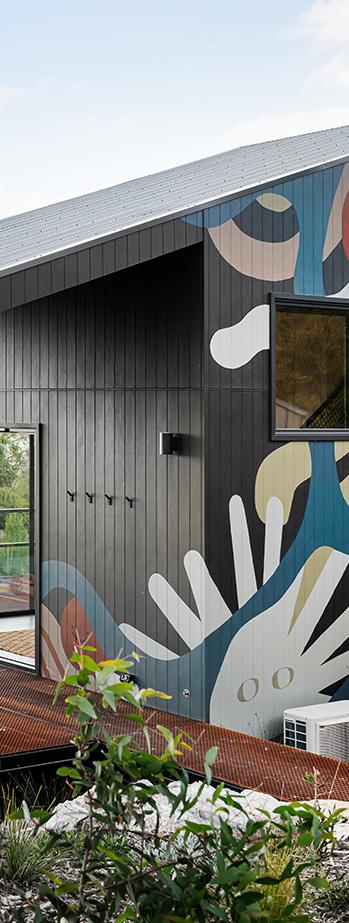
The original design brief to Melbourne-based Architect Imogen Pullar was for a sculptural home, built to BAL-40 fire rating, that references its patron, the creative agency Jacky Winter Group. It also needed to incorporate solar power, onsite wastewater management and water tanks. However, the steep site presented the architects with complex issues around managing erosion and site drainage, predicating a small, lightweight building that captures the magnificent views to Wilson’s Promontory National Park.
With an overall footprint of just 30 square metres, the home allows visitors to experience the beauty of the epic surroundings within a minimalist design that includes the essentials for cooking, bathing and resting. A large Cortensteel deck wraps the home, providing a functional platform for outdoor living with well-equipped dining and lounging areas, along with an outdoor shower and fire pit.
The interior includes a 14-square-metre mezzanine, and is adaptable to suit one person or a family with kids, with overlapping functions and comfortable built-in furniture. ‘We approached it much like a caravan design,’ says Imogen. ‘The house sits in a sleepy beachside village among 1960s fibro shacks with very straightforward detailing, so we replicated this local ethos. We kept the design robust, simple, and easy to fix and maintain –avoiding anything too fancy or bespoke.
‘Keeping the speed of construction and costs in mind, we selected locally made, off-the-shelf materials as much as possible. The grooved fibre-cement panels meant we could use standard detailing, making the exterior speedy to build. The fibre-cement Axon™ Cladding met all our practical criteria and also allowed us to create something unique and interesting as a canvas for the mural.’
After numerous cladding comparisons, Axon™ Cladding was chosen for its BAL-40 compliance, allowing the exterior of the building to be painted in ‘playful camouflage’, while its grooved profile reflects the beachside aesthetic and gives the material depth, highlights and shadows. ‘The James Hardie website features a matrix of products that suit different fire ratings,’ explains Imogen. ‘It also provided all the digital files we needed for proper detailing and building code compliance.’
At the Jackie Winter Waters retreat in coastal Victoria, Axon™ Cladding was chosen for its BAL-40 compliance, allowing the exterior to be painted in ‘playful camouflage’, while its grooved profile reflects the beachside aesthetic and adds depth, highlights and shadows.
Axon™ Cladding also meets the requirements of the corrosive coastal environment within the strict budget. ‘We researched metal and fibre-cement options at the outset,’ explains Imogen. ‘Metal battens were not suitable in the marine environment, so the whole building structure
is timber. This is beneficial as there are minimal thermal bridges through the building envelope, and timber is a low-carbon material. We used timber battens behind Axon™ to provide a ventilation and drainage cavity behind the cladding and to allow the vapour-permeable wrap to breathe.’
Modular materials were needed to ensure ease of construction, minimal wastage and minimal cutting. ‘We wanted to use cost-effective, sustainable and reusable materials bolted together, rather than glued or welded, so the house can be disassembled at the end of its life,’ says Imogen. ‘The interior paints are all low-VOC and materials can be recycled or upcycled.’ Even with its modest footprint, the house doesn’t feel small. It has expansive views to the forest to the north and east over the sea. It has enabled a meditative place for visitors to experience the beauty of the environment – for artist residencies, family breaks and individual retreats, as well as a weekender rental.
The Jackie Winter Waters retreat sits on a steep, bushstrewn hillside above Waratah Bay. With the high bushfire risk, the building envelope needed to be fully fire-proofed with a robust exterior – a brief ably met by James Hardie’s Axon™ Cladding.

In the manufacture of Axon™ Cladding and other products from James Hardie, we have decreased our landfill waste through LEAN, and increased beneficial reuse of our manufacturing waste, and we no longer use coal burners in our process. The annual Sustainability Report provides all the data and activities of the business, as we work to reduce greenhouse gas emissions by the building industry.


James Hardie have released its annual Sustainability Report, outlining the company’s progress toward its sustainability goals during fiscal year 2022, which ended on March 31, 2022. James Hardie’s 2022 Sustainability Report, Building Sustainable Communities, details a strategy that focuses on four key pillars: innovation in sustainable products and building practices, Zero Harm culture, minimising impact on environment, and positively impacting local communities.

Key highlights from the 2022 Sustainability Report include:
• Reduction in greenhouse gas emissions intensity, supported by the elimination of coal boilers in Australia
• Implementation of new water-saving technologies and standardised processes
• Decreased landfill waste through LEAN and increased beneficial reuse of our manufacturing waste
• Appointment of James Hardie’s first Vice President of ESG and Chief Sustainability Officer, Jill Kolling
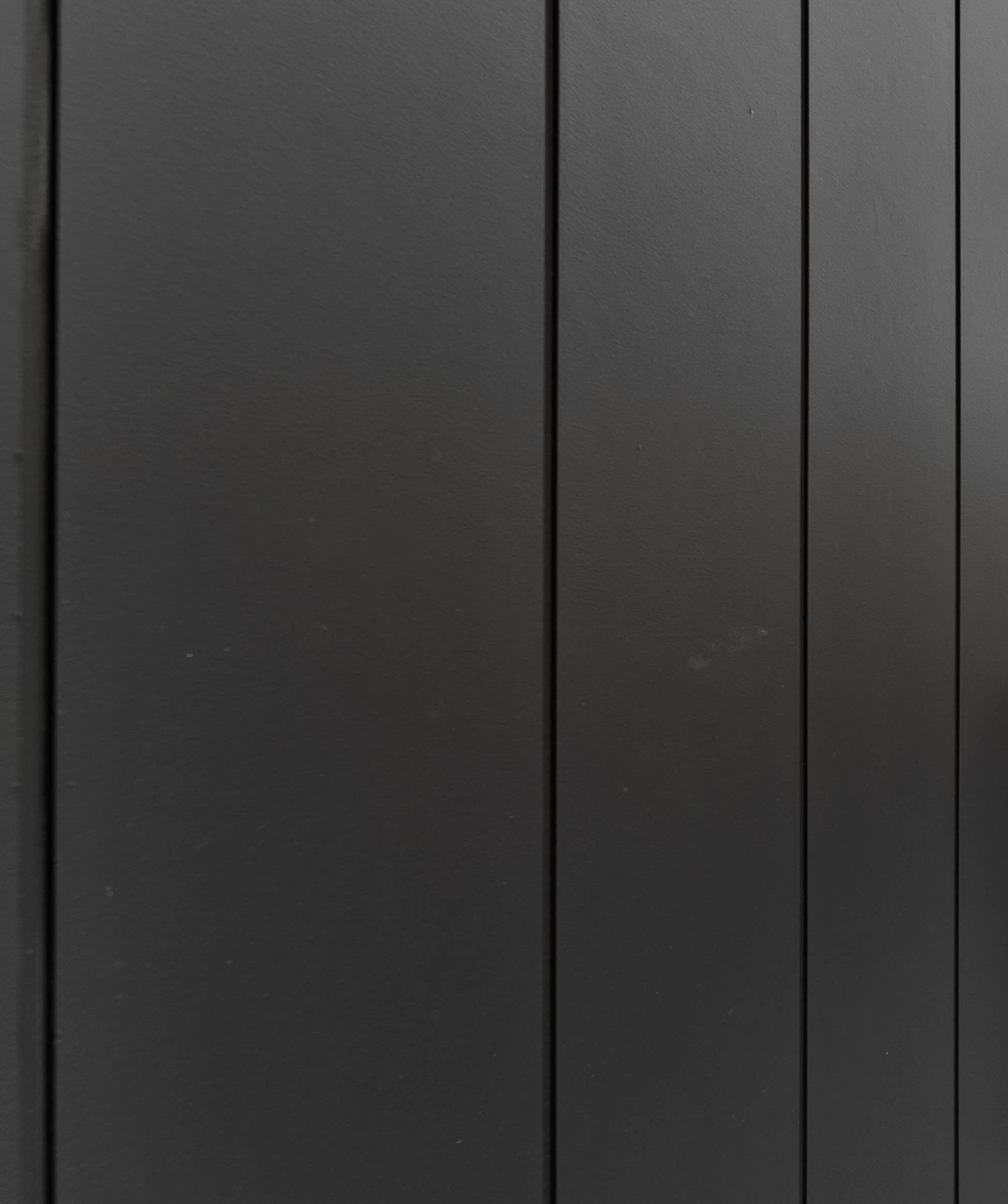
Jill Kolling said: “We remain more committed than ever to innovating our product pipeline and operational practices, while listening to and engaging our employees, customers, and shareholders. The past year was a significant year of growth for our company globally, we are proud of our progress and we are committed to doing more. We look forward to growing our company alongside our goal of helping to build stronger, more sustainable communities.”
James Hardie’s sustainability strategy is integrated with its global strategy for value creation and operational performance.
II. Environment Our environmental commitments include reducing waste, conserving water and energy, renewing and recycling resources, and protecting the environment –while delivering a high-value product and strong alternative to traditional building materials. We continue to invest and make progress towards our environmental commitments.
• 21% reduction in scope 1+2 greenhouse gas intensity (MT CO2e/$ revenue) in calendar year 2021 (“CY21”) from calendar year 2019 (“CY19”) baseline against a goal of 40% by 2030.
• 47% reduction in landfill waste intensity (MT/$ revenue) in CY21 from CY19 baseline against a goal of 50% by 2030.
• 3.87 million additional cubic feet of water recycled in CY21 from CY19 baseline against the goal of 20 million additional cubic feet
• After 50 years of continuous use, the coal boiler at the Carole Park plant in Queensland, Australia was shut down in March 2022 to make way for new and more energy efficient natural gas boilers. The new gas boilers are expected to achieve a 65% reduction in greenhouse gases versus the coal boilers, along with a reduction in overall site greenhouse gas emissions.
• More than two million cubic feet of water was saved in CY21 when James Hardie implemented new technologies at its Pulaski, Virginia plant. The water savings has benefitted the local community by lessening demand on the town’s water source and treatment facilities.
• James Hardie recently signed a multi-year contract with a local company for proprietary beneficial reuse of manufacturing waste from our Cleburne and Waxahachie plants in Texas.
• Through a waste takeback program in Europe, trim cuttings are being salvaged from customers and recycled into new Fermacell® fiber gypsum boards, which are made of 100% recycled wastepaper.
IIII. Communities At James Hardie, we care deeply about how our business affects local communities. We manage our community value creation by employing, sourcing, delivering, and giving locally. Our plants and offices support local communities in several ways:
• Contributed $1.42 billion in economic value to communities in which James Hardie operates.
• 80% of raw materials sourced locally.
• 65% of products delivered locally.
• 75% of staff hired from the local community.
• When violent storms hit Kentucky and Tennessee in December 2021, James Hardie responded by donating $100,000 to the American Red Cross and by providing Habitat for Humanity with product to build/rebuild at least 50 homes in the region.
• James Hardie responded to the heavy rains and flooding in Germany in July 2021 by donating a combined €100,000 in relief funds and product.
• In North Eastern Arnhem land in Northern Australia, James Hardie is donating funds and materials to help build a school of arts and culture for women and children impacted by domestic violence.
III. Zero Harm At James Hardie, safety is a non-negotiable value that is imbedded into the organisational culture at all
our factories and offices. We prioritise the protection of our people and those who interact with our products. Building better safety systems is at the heart of James Hardie’s Zero Harm program. Safety is embedded in our corporate culture 24/7 across our global operations.
• Total recordable incident rate (TRIR) was 1.22, below the industry average of 3.8.
IVIV. Innovation Fiber cement technology is renowned for its durability and long-lasting beauty, which deliver value to homeowners over the long term. Consumer insights continued to serve as a strategic tool for building value in James Hardie’s innovative product line in calendar year 2022.

• The Hardie® Architectural Collection was introduced at the NAHB: International Builder Show in February 2022.
• In FY22, 26% of revenue was derived from products with environmental product declarations (EPD), against a goal of 80% by 2030.
James Hardie manages environmental impact through integrated operating and management systems such as the Hardie Manufacturing Operating System and LEAN manufacturing processes. In FY22, James Hardie generated more than $3.6 billion in net sales (a 24% increase over FY21) and more than $621 million in net income (a 36% increase over FY21).
Since the COVID-19 pandemic, there’s been a significant increase in our reliance on technology. While the internet and modern technologies open immense possibilities for businesses, it also increases our vulnerability to cybercrime – as more staff continue to work remotely, do you know how secure your systems are?
With cybercrime up 600% since COVID-19, it’s never been more important to invest in risk management practices to protect your business against cyber liabilities.
Cybercrime is criminal activity that targets or uses a computer, computer network or networked device.
It’s most often committed by cybercriminals or hackers with the intent to make money, or with malicious political or personal agendas.
Yet, these types of attacks have far broader consequences for businesses than a solely financial one.
Most businesses who have been subject to cybercrime also suffered from loss of system access, compromised emails, reputation damage, corrupted files and a significant investment of time and energy – the average time of interruption after suffering a breach is 20 days.
There are many types and severities of cybercrime, however, the most common impacting Australian businesses are:
• Social Engineering
• Phishing
• Malware
• Ransomware
• Cyber Extortion
• Identity Theft
• Social Media Fraud
• Cryptojacking, and
• Telephone Phreaking
To avoid becoming the next statistic, there are 5 simple ways you can protect your business and reduce the risk of a cyber attack:
1. Enable multi factor authentication 2. Keep software up to date 3. Use anti-virus software 4. Backup your data 5. Staff training and awareness
Unless you specifically have cyber insurance, it’s unlikely you’re insured against the risks of cybercrimes.
A Cyber Liability insurance policy is typically recommended to form part of your overall risk management strategy.
This policy goes beyond traditional liability insurances, to address the risks involved with internet exposure and provide you with maximum protection for your business.
*This information is of a general nature and does not take personal circumstance into consideration.





While technology may have been the theme of the past decade, there’s definitely a new kid on the block. Sustainability is fast becoming a hot topic in offices and boardrooms across the globe, for large and small businesses alike.

In an external and global context, sustainability is used to describe the way humanity as a collective manages natural, social, and economic resources to sustain quality of life for future generations. For example: will deforestation jeopardise the availability of timber in coming years? Or, will poor working conditions lead to depopulation in disadvantaged societies?
Growing concern about our ability to protect humanity’s resources has led to a demand for more accountability and transparency in our practices – particularly from big businesses.
There have been several approaches put forward as ways to measure how sustainable our actions are. One of these is ‘United Nations’ 17 Sustainable Development Goals(SDGs) which are being seen as a blueprint to help nations be more sustainable. The goals include environmental aspects such as energy efficiency, waste management and forestation, as well as social aspects such as education and equal rights. Environmental, social and governance (ESG) is another approach, and one that appears to be gaining increasing supportparticularly due to its practical application for businesses.
In Australia there’s growing interest from individuals, collectives, and regulators in taking actual steps towards supporting global sustainability efforts. This is already affecting how consumers and investors behave,and paving the way for new regulations.
The term sustainability simply means “to continue” or “endure”. It certainly isn’t a new concept to business owners, who understand the importance of managing resources to ensure their business can survive in the future.
For example: do we have enough supply to sustain production? Or, will our cashflow sustain operations until we can expand?

As a result, the Australian government will likely introduce new regulations to achieve this target, as we have seen with other national governments. This may include the institution of emissions thresholds, with penalties for companies that exceed them. This already exists for larger emitters under the Safeguard Mechanism, which applies to facilities that emit more than 100,000 tonnes of carbon dioxide equivalent (CO₂e) per year.
While there is currently no legal requirement for sustainability reporting in Australia, ASXlisted companies are already recommended to report on certain nonfinancial risks - such as climate-related and social risk exposures. Similar initiatives have existed around the world for years, like the Non-Financial Reporting Directive in Europe. This requires large companies to report on how they deal with issues such as environmental pollution, social responsibility, human rights, and diversity.
We’re starting to see growth in initiatives like these with the introduction of more robust reporting requirements and frameworks. In 2021, the International Sustainability Standards Board was established to develop disclosure standards for listed companies globally. The aim is to make a company’s sustainability risks and opportunities transparent and publicly available so investors and stakeholders can make informed decisions. While most of the current changes appear to target big businesses, there are several reasons why small to medium enterprises (SMEs) should take notice. The first is the likelihood that regulatory change will eventually apply to SMEs too.
The second is that there are plenty of opportunities SMEs can gain from becoming more sustainable as a business. The third reason is the potential risks that could unfold for companies which are slow to adapt.
In 2021, the Australian Government announced a commitment to achieve net zero emissions by 2050. This means Australia will need to take practical steps to achieve balance between the amount of greenhouse emissions produced and the amount that is removed through green initiatives.
Companies are recommended to report climate related and social risk exposures.
As demand for corporate responsibility grows, an increasing portion of consumers are choosing to vote with their wallets.
of consumers are aware of the sustainability practices of brands (BCG 2021 global consumer survey)
say a company’s sustainability practices influence their purchasing decisions (Capterra study)
of respondents agree that clearly demonstrating a commitment to sustainability adds value to a brand (BBC study)
Globally, eco-conscious consumers and investors are behind a surge in demand for sustainable products and brands. This is echoed in Australia, with 90% of consumers expressing a desire for sustainable products.
The heightened focus on sustainable business practices connects to growing concerns around the environmental impacts of greenhouse gas emissions. A survey published in April 2022 revealed that 83% of Australians are concerned about climate change, with 73% believing that it “poses a serious threat to our way of life.”
This shift in attitudes means that businesses who don’t adapt to sustainability trends risk getting left behind.
Meanwhile, SMEs that can demonstrate increased sustainability may gain a competitive edge over their peers because theyare engaging consumers in ways that matter to them.
Early adapters have an opportunity to engage consumers and demonstrate increased value. New sustainability initiatives may improve customer retention, while creating avenues to attract new customers.
There have been a wide range of recent studies examining consumer sentiment on sustainability in Australia. Some of the findings include:

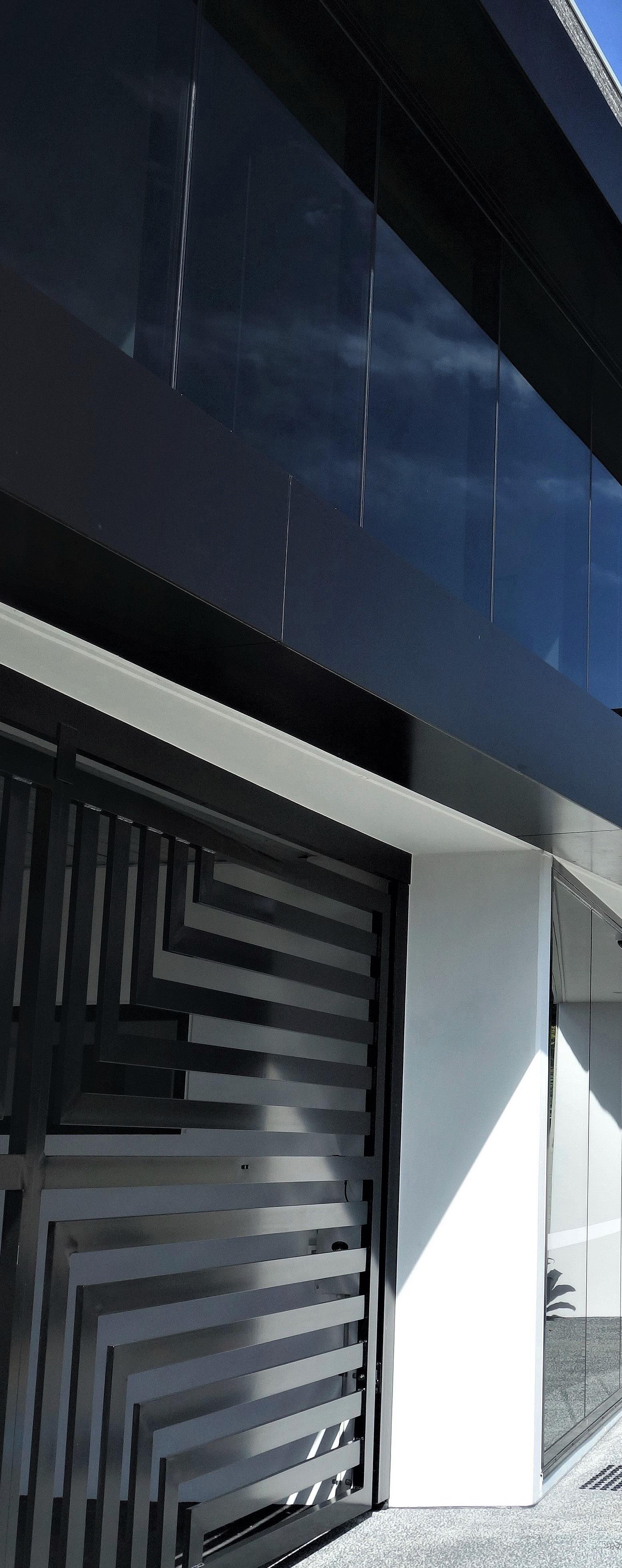
A recent study by IBM found a growing interest from employees wanting to work for environmentally sustainable companies. In the study, 67% of participants said they were more willing to apply for a job with an environmentally sustainable company. 68% said they were more willing to accept a position with an environmentally sustainable company.
In the midst of a global skills shortage, this is quite significant and represents an opportunity for sustainability-focussed organisations to stand apart from their competitors and attract muchneeded staff.
Several studies have also shown that the desire for meaningful work now outweighs salary. Meaningful work creates a sense of fulfillment and purpose, and has positive impacts on wellbeing, workplace culture, and talent attraction.
Going green and committing to social responsibility demonstrates a level of care and innovation that a growing portion of skilled employees find meaningful.
For existing staff, there is potential to drive employee engagement by empowering individuals and teams to help the business achieve its sustainability goals. This includes goals to reduce environmental impacts, as well as initiatives that enhance social and ethical practice - such as promoting health and wellbeing, and diversity and inclusion programs.

Dubbed a “mega trend” by some, interest in green investing has skyrocketed in recent years. In fact, a 2021 study found there had been a 34% jump in environmental investing in just 12 months.
A growing number of big investors have declared an intention to invest only in companies that are proven responsible corporate citizens. This is echoed by the growth in green superannuation funds, where members opt to have their money directed to funds that only invest in companies which meet certain sustainability conditions.
These investment factors have lit a fire under industry, with stakeholders concerned they’ll be unable to secure funding or investment if they don’t take steps to be more sustainable. At the same time, businesses that can already demonstrate a commitment to sustainability are finding it easier to attract investors.
So what does it take to become more sustainable, and be able to prove it to external stakeholders? Where do you even begin?
This is where we can look to certain frameworks, such as ESG, for guidance.
(ESG)
It’s a broad term that covers many factors, and people might use it to:
• refer to an investment strategy
• evaluate business impacts
• rate risks in a business
They may even use it to describe the concept of sustainability itself! Because it can get confusing, we’ve boiled it down to the most relevant parts. Essentially, ESG was developed to help environmentally and socially conscious investors identify funds that match their ethical values. Developing an ESG report that divulges your company’s performance in these areas is thus a critical tool for attracting this growing pool of investors.
ESG also provides a straightforward way for corporate entities to benchmark performance against their own goals, and the performance of their peers.
When evaluating environmental factors, ESG looks at environmental risks and impacts. Risks are a measure of how environmental factors, such as resource depletion or weather events, might impact business operations and performance. Environmental impacts refer to the impact of an entity’s practices and processes on the natural environment.
Some of the environmental factors that are measured include:
• greenhouse gas (GHG) emissions
• waste and pollution
• resource depletion
• energy efficiency
• water management
• deforestation
• habitat destruction
• animal treatment
This will apply in different ways to different industries and encompasses a business’s entire operations – from the head office to field operations and supply chains.
Reporting against the “E” within ESG relates to the nature-positive goals of an organisation, and how well they are tracking against those goals. Carbon emissions are of particular importance due to global efforts to limit the impact of climate change.
Environmental, social and governance
is a reporting framework for measuring an individual or commercial impact on environmental, social and economic resources.
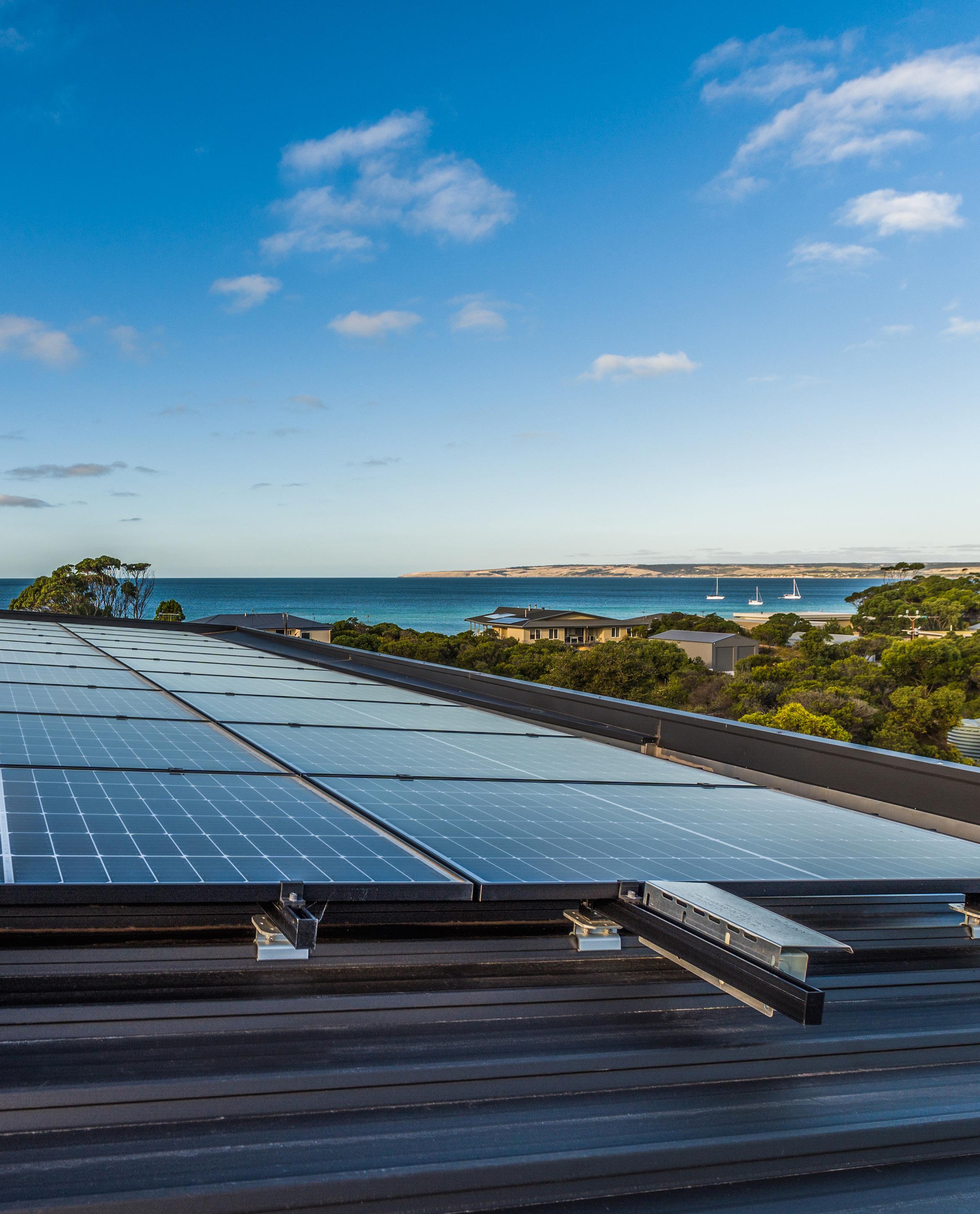
Social refers to how an organisation’s practices and processes impact people, including employees and the broader community.
It includes factors such as:
• employee relations and modern slavery
• human rights
• data protection and privacy
• ethical supply chain practices
• diversity and inclusivity
• health and safety
• conflict management
• working conditions
Modern slavery is an aspect of the social element of ESG. The purpose of recent legislation is to eliminate the severe exploitation of people through methods such as human trafficking, forced labour, slavery of children, and so on.
Large entities in Australia are already required to report annually on the risks of modern slavery in their operations and supply chains, and how they address those risks.
Governance, also called corporate governance, refers to how a company is managed and the level of responsibility in its policies and practices.
It includes factors such as:
• board structure and advisory committees
• enterprise risk management
• executive pay
• tax strategies
• political lobbying and donations
• board diversity and structure
• anti-bribery and corruption
• shareholder rights

As it stands, there are a number of different frameworks or reporting standards for companies to choose from when publishing their ESG performance. This has drawn criticism from some as it has allowed unethical entities to “greenwash” or disguise poor environmental performance through cherry-picked data. This has already led to reform in the EU where they have introduced regulatory standards and mandated reporting to ensure transparency.
Despite this criticism, ESG still appears to be a frontrunner in the field of measuring sustainability, with ESG investing achieving massive growth in recent years. It is likely that ESG reporting standards will undergo further refinements in the future, but its status as the dominant framework for business sustainability is unlikely to change. As such, it is currently the best option for businesses looking to comply with emerging regulations.
Ethical governance shows investors and the community that a business operates in a way designed to ensure the highest standards of behaviour.

Jerry Tyrrell has been assessing building quality for 5 decades.
He is staggered that we continue to unintentionally build badly and are regularly targets for the media. ‘Not only do we look incompetent, the Contractor has to replace something or the Customer has to put up with unnecessary problems or excessive maintenance’ says Jerry.
Written by Architect and Building Expert Jerry TyrrellFailure is a pain financially to Australia –over $20B per annum. And success is so much better for our profit, reputation and emotional wellbeing. Ironically, success ticks the box environmentally too. This is because there is zero wasted carbon cost when the Designer and the Contractor achieve compliant best practice’ added Jerry.
The carbon saved by knowing how to build properly can also be estimated. It is a no brainer to all of you who have seen timber rot, steel rusting, box gutters leaking and flooded, mouldy basements. Fixing something that was always wrong is a practical and environmental disaster –more landfill, inconvenience, dust and chemicals. And even if the Contractor should have known better, Designers will also be ‘lassoed’ into the blame game.
The Balance Sheet is not looking good. And these costs have not included losses incurred under Sustainable Development Goals, Life Cycle Assessment or the stress these endless mistakes cause.
Faulty design 50 times
Wrong detail 30 times
Mistake 30 times
Wrong product 100 times
Non-durable material 200 times
Excessive maintenance 50 times
Unnecessary replacement 500 times
* typical extra carbon required over the carbon needed to build properly in the first place
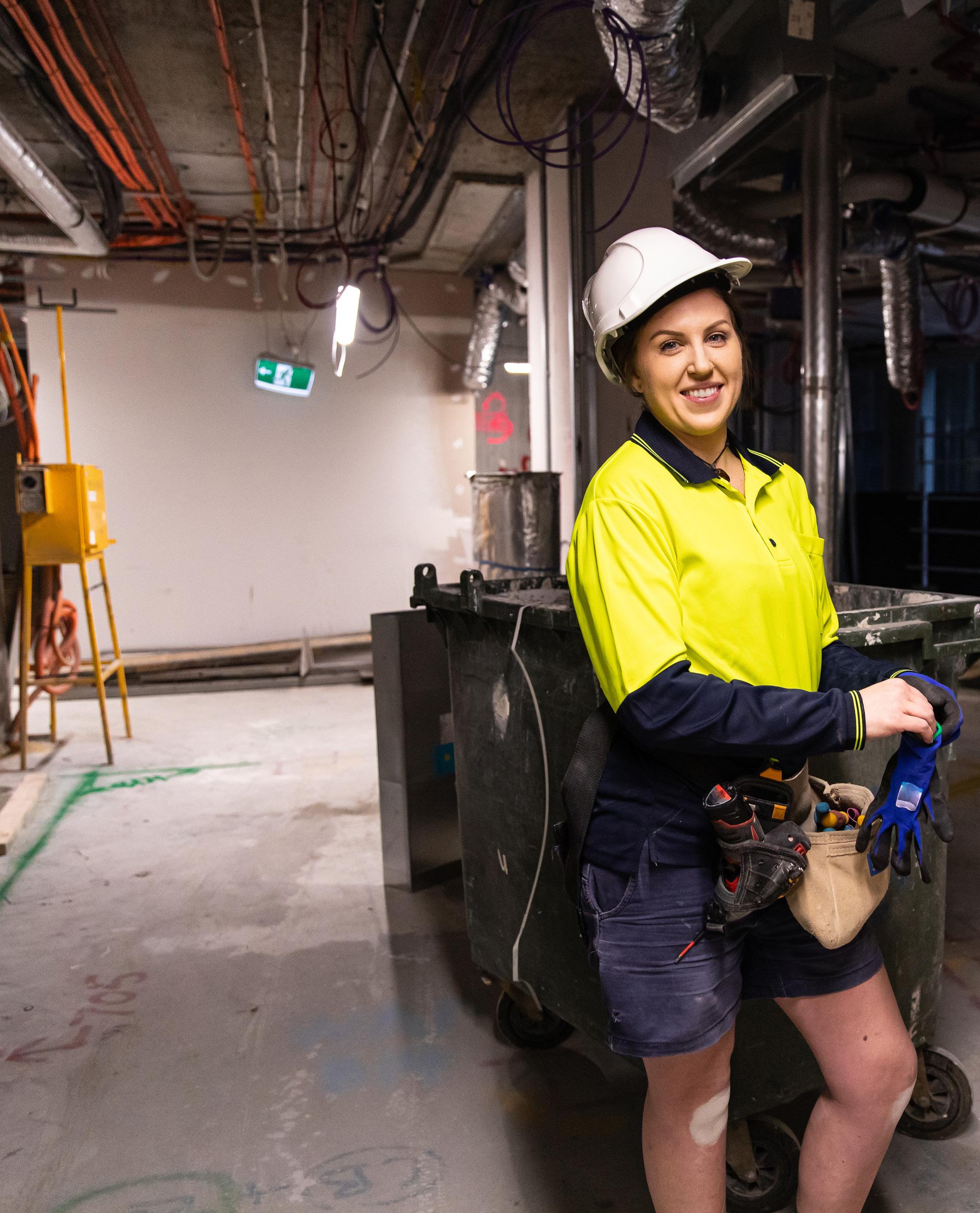
Knowledge is the Tool™ everyone needs
Jerry and his Team recently launched Tools™ at the BDAA National Conference in Melbourne.
Tools™ is what we have always needed to do our job. It saves the unpaid time we spend looking for answers in the NCC and Standards. It provides best practice Tools™ to use when we detail or specify anything complex in our drawings.
‘I’m surprised and energised by the response from Designers and Contractors. Tools™ is the revolution we have been waiting for – knowledge that liberates us. Knowledge that Governments and Associations should have given us’ says Jerry.
This ‘well of knowledge’ works well …. haha. Everything is ‘eyeball’ friendly because, guess what, ‘we Designers like pictures and graphics’. And when you find what you want, you can zoom it, place it on a drawing and, most importantly, share it with someone you respect …. and who will now respect your knowledge.
Have a look and quickly know what Jerry and thousands of other building experts know. And then always be able to find and share this knowledge instantaneously - at your desk or on your phone.

Tools™ are now here. They can be used by everyone –24 / 7. They make you into the expert you always wanted to be. At last success is easier. And you are no longer creating carbon with your mistakes. Knowledge is power. Tools™ are cool because they lower carbon use. Maybe Tools™ are just what we need for a cooler globe?

 Designer: Mark Penna
Designer: Mark Penna
Modern winery buildings are now becoming cutting edge attractions.
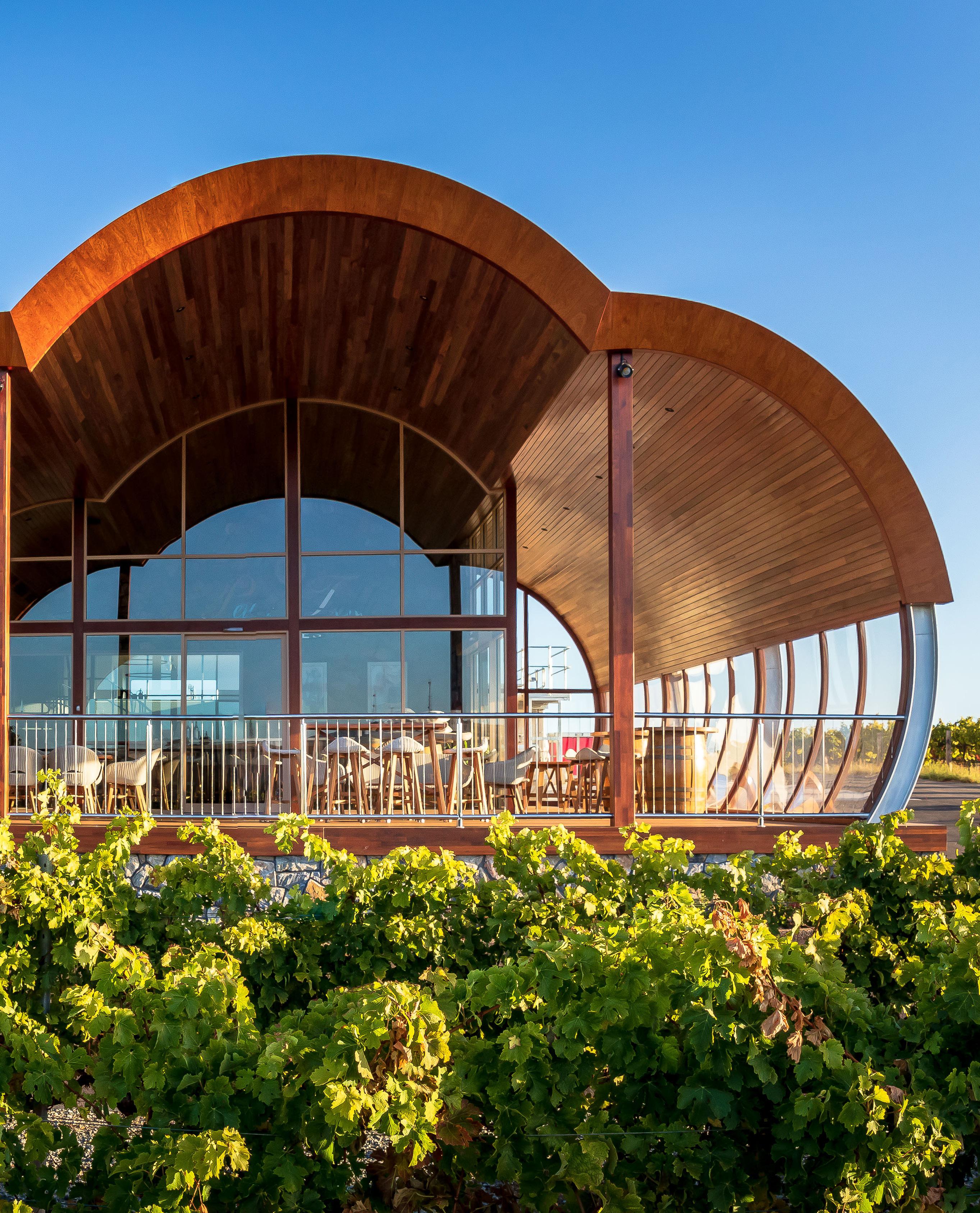
While ESG provides the framework for sustainable practices, an ESG score measures how well a business is performing within that framework.
Finance and investment firms, consulting groups, and even government agencies can develop their own ESG scores to measure an organisation’s sustainability efforts.
Internally, any business can develop its own ESG scorecard to measure and report on progress against ESG-related goals.
The scorecard includes aspects of ESG that relate specifically to the business, and could include:
• carbon emissions
• raw material sourcing
• packaging material and waste
• clean technology
• supply chain labour standards
• privacy and data security
• health and wellbeing initiatives
• employee and diversity management
• tax transparency
• business ethics
• shareholder management
An ESG consultant can support you to develop an ESG scorecard and a maturity assessment. It is a valuable way to retain focus on sustainability initiatives within your business, and will help you keep track of progress over time.
Organisations that develop an ESG scorecard and targets now are also well-prepared if an external stakeholder decides to introduce one as a requirement in the future.
ENVIROMENTAL KPIs
ESG framework frequency
Climate change opportunities and risk 10/10 Emissions -Greenhouse gas emissions 9/10 Environmental policy 8/10 Energy 8/10
Environmental management systems 7/10
SOCIAL KPIs
ESG framework frequency
Supply chain - social 10/10 Stakeholder engagement 7/10 Health and safety 7/10 Workforce development / Human capital 7/10 Diversity and equal opportunity 6/10
GOVERNANCE KPIs
ESG framework frequency
Climate change opportunities and risk 10/10 Emissions -Greenhouse gas emissions 9/10 Environmental policy 8/10 Energy 8/10 Environmental management systems 7/10

Australia has declared a commitment to achieve net zero by 2050. This means we will have strategies in place to equalise the amount of carbon emissions produced with the amount being taken out of the atmosphere.
We’re already seeing new initiatives that seek to take a collaborative approach between government, business, and community to address climate change as we transition to a more sustainable world. This reflects legislative changes recently passed in the House of Representatives to cut greenhouse gas (GHG) emissions by 43% by 2030, and achieve net zero emissions by 2050.
It will not be possible for every business to achieve a state of zero emissions. Where there is a gap, the business can purchase what’s known as “carbon offsets” to achieve net zero emissions. Carbon offset units are used to fund actions taken to reduce, remove or capture emissions from the atmosphere. These offsets often improve other sustainability focus areas with accompanying social, environmental, and economic benefits.
You can choose to purchase carbon offsets locally and support Australian-based projects, or you can purchase international offsets to support projects in countries such as Africa.
If your business is already achieving net zero emissions, you can apply to become a certified Climate Active member.
Climate Active is an initiative by the federal government to assist Australian businesses in becoming carbon neutral.
To receive a Climate Active certificate, an organisation must demonstrate carbon neutrality. This can be achieved through a combination of taking action to reduce GHG emissions produced by your business operations, and offsetting the remaining emissions by purchasing carbon offset units.
Organisations that achieve net zero emissions are awarded a certification stamp. The Climate Active certification stamp acts as a signal to consumers to help them identify sustainable brands.
A Climate Active Registered Consultant, which RSM can provide, can help you prepare and apply for Climate Active certification.

For example, consider the cost savings of reducing your total energy usage by 20%. Or, reusing materials instead of discarding them! Think of the financial and reputational possibilities that could stem from new innovations. Or the increase in staff retention that could be achieved by implementing new social policies.
Because SMEs are more agile than larger entities, they have a significant advantage if they choose to be early adopters. Whether it’s just a few small changes or revolutionising your entire business, those that start now will be in a much stronger position to manage whatever unfolds in the future.
Quality Global Supply (QGS) is an innovative food manufacturing company specialising in honey powder. The business was established to promote honey consumption in an effort to save the world’s rapidly diminishing bee population.
QGS founder, Karl Lijun Qin, has gone on to develop a range of honey-based products – including a honey powder which has received notable attention as an alternative to processed sugar and as a nutritious space food for astronauts. Karl’s team is also engaged in clinical trials for its QV0 product. QV0 is derived from the Manuka plant and is proven to attack only cancer cells without any harm to healthy cells (animal tests conducted by the Asbestos Diseases Research Institute), so it is currently being evaluated as an alternative cancer treatment.
Having founded QGS to address the sustainability of Australia’s bee population, Karl says sustainability is central to the way they operate.
“As a small enterprise, our entire operation is guided by sustainable practices. We don’t use plastic packing
materials, and we don’t overpack goods. When we collect materials, we use reusable bags. When we use water, we have processes in place to keep discharge to a minimum. We reuse absolutely everything we can – such as making pillows or quality fertiliser from the Manuka plant leaves after extracting QV0. We also source leaves for QV0 from the waste of another company that first uses them to extract Manuka oil. This type of closed production circle means we generate very little waste.
“I believe we have a responsibility to choose sustainability, or the environment will choose it for us. If we agree on evolution, we must also agree that we have evolved in unison with our environment. Nature has sustained us since the beginning of time, and the increased consumption of synthetic products – including foods and drinks – is not sustainable for the environment or our health.
“We don’t need to wait for government regulation; we can take our own action. Humans and the environment are not separate, so we must learn to respect nature and protect what sustains us.”
It’s important to remember that most efforts to be more environmentally and socially sustainable don’t only benefit the environment and local communities. They make your business more sustainable too.


Perhaps you have already made some operational changes to be more sustainable. Or maybe you are still in the early stages, with just a few ideas on where to begin.
Whatever the case, keep in mind that sustainability is a long game. Try not to make hasty decisions without proper planning, as these could end up costing you valuable time and money.
You can start by understanding the level of change you need to make based on your industry, stakeholders, and existing practices. Here are three steps to help you launch your sustainability journey…
Conduct an analysis on the needs and expectations of external stakeholders such as customers, suppliers, regulators, investors, financiers, and even insurers.
Then, analyse the expectations of internal stakeholders such as employees and leadership. Together, these will dictate the speed of change and the types of changes that are needed.
Not all sustainability measures apply to all businesses. There will also be opportunities to improve in areas you are well aware of, and others you would never have thought existed. Take a holistic view of your organisation and examine all practices and processes. Review how you use resources, and dig deep into your governance arrangements.
If it’s difficult to do this objectively, engage an RSM ESG consultant to assist.
Ideally, you want to take a measured and purposeful approach. A sustainability report is about stepping back and examining the bigger picture. It’s about asking questions around the sustainability factors that impact your business, and how your operations impact those factors. This helps identify business risks like supply chain vulnerabilities. It also helps cut down business costs by revealing inefficient resource use or bloated costs.
Conduct a thorough ESG risk assessment of your current state versus existing requirements, as well as potential future requirements. You could do this internally, or engage a third-party to provide an ESG risk assessment and material topics assessment (an analysis of topics that represent your business’s most significant impacts on the economy, environment, and people).
Keep in mind that risks will often go deeper than they appear at first glance. For example, data is a vital element to producing a sustainability report. The ability to capture accurate and trusted data can be a feat in itself, and requires appropriate processes and tools. If you don’t have these in place, this is a risk that will need to be addressed.
Remember also to look at the full spectrum of environmental and social risk that could apply to your business. For example, what is your level of climate resilience? Can your operations withstand the impact of changing weather patterns, and what strategies are in place to handle more extreme weather-related events if they occur?
Keep in mind that risks will often go deeper than they appear at first glance.
The voice for the building design sphere and everyone who works to fill and define a more sustainable built environment, the Building Designers Association of Australia is a true home for designers and those in related fields.
BDAA offers education, advocacy, representation, national conference and design awards programs, certification, CPD and networking opportunities, and much more.


Join the BDAA today for a brighter, more sustainable tomorrow.
Nothing beats the texture and warmth of natural materials in our homes, and top of the list of natural materials, for most of us, is timber. The grain, the texture, the tone, it all helps bring life to spaces, and to bring a sense of warmth to our home. Adding timber lighting to your home decor is a perfect way to add that feeling of warmth to your home. The feeling of warmth in a space can be just as important as actually walking into a warm room!
Unlike other materials such as plastic or metal, timber has a colouring and texture that provides a natural “warmth” or cosiness. Each piece of timber is unlike any other, with it’s own unique combination of colour, tones and features that give it character, and so, in turn, bringing character to your space.
There are some studies that suggest that timber carries with it some properties that are also good for our wellbeing, including having a calming and relaxing effect, helping to explain that feeling of “warmth” we get from the use of timber in our homes.
There are easy ways to bring timber elements into your home without creating feature timber walls or spending a ton of money on costly renovations. One of the easiest ways to introduce elements of timber is through homewares, furniture pieces, or even through lighting.
The warmth timber lighting can bring to a space makes it an easy choice for making a room look and feel cosy and inviting.
Timber lighting can enhance and compliment the soft design of a space, or it can create a soft edge in a more industrial or modern space. Give a cool space warmth with timber lighting, or an “artificial” space an organic feel.
By it’s very design, timber can help to compliment, or to offset, other design features in your home.
As a natural element, timber lighting can have the effect of “bringing the outdoors in”. Most modern Australian homes are built around the idea of living indoors and outdoors, and so, always looking for ways to draw elements from one to the other to give us that feeling of extended space.
By adding a little of the outdoors inside your home, it is also a great reminder that warmer months are not far from reach!
While it may not add to the feeling of warmth in your home, timber lights are also a great eco-friendly solution to lighting!

“Adding timber lighting to your home decor is a perfect way to add that feeling of warmth to your home.”
There are a multitude of benefits to using timber lighting to add that element of “warmth” to your home.

• It is relatively inexpensive compared to the costs of refurnishing or renovating entire spaces.
• It adds a “touch” of warmth to a space without feeling like the space has been wrapped in a warm blanket.
• It allows combinations of elements such as timber lights with touches of metal or iron to compliment and tie a space together.
• By it’s very nature, it changes with the light. For instance, a timber light will produce a different lighting effect with a warm white, as opposed to a cool white, light globe.
• It is easily changed out depending on the trend or use of the space.
• It is unique as no two pieces of timber will ever be exactly the same.
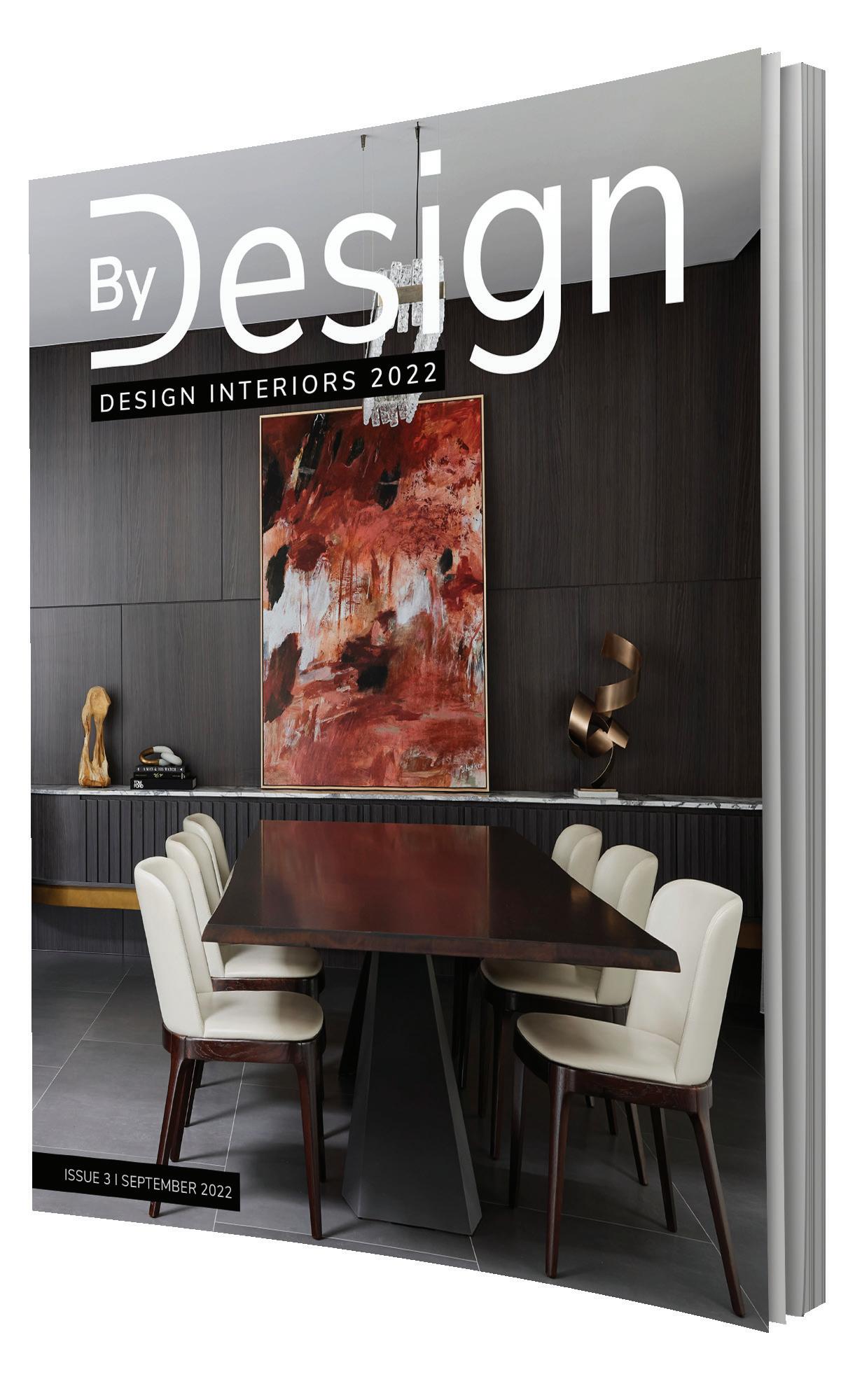
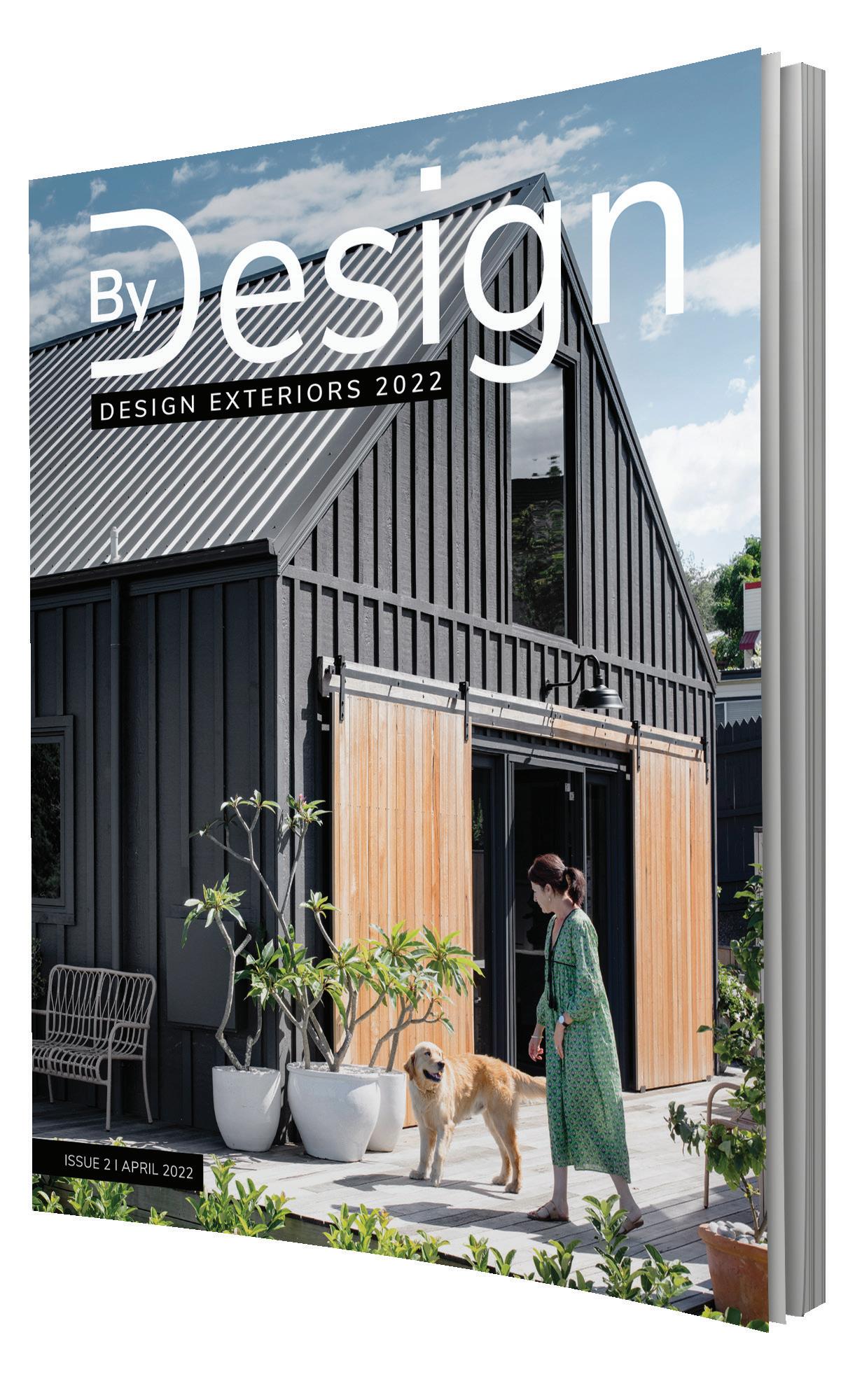


All
F REE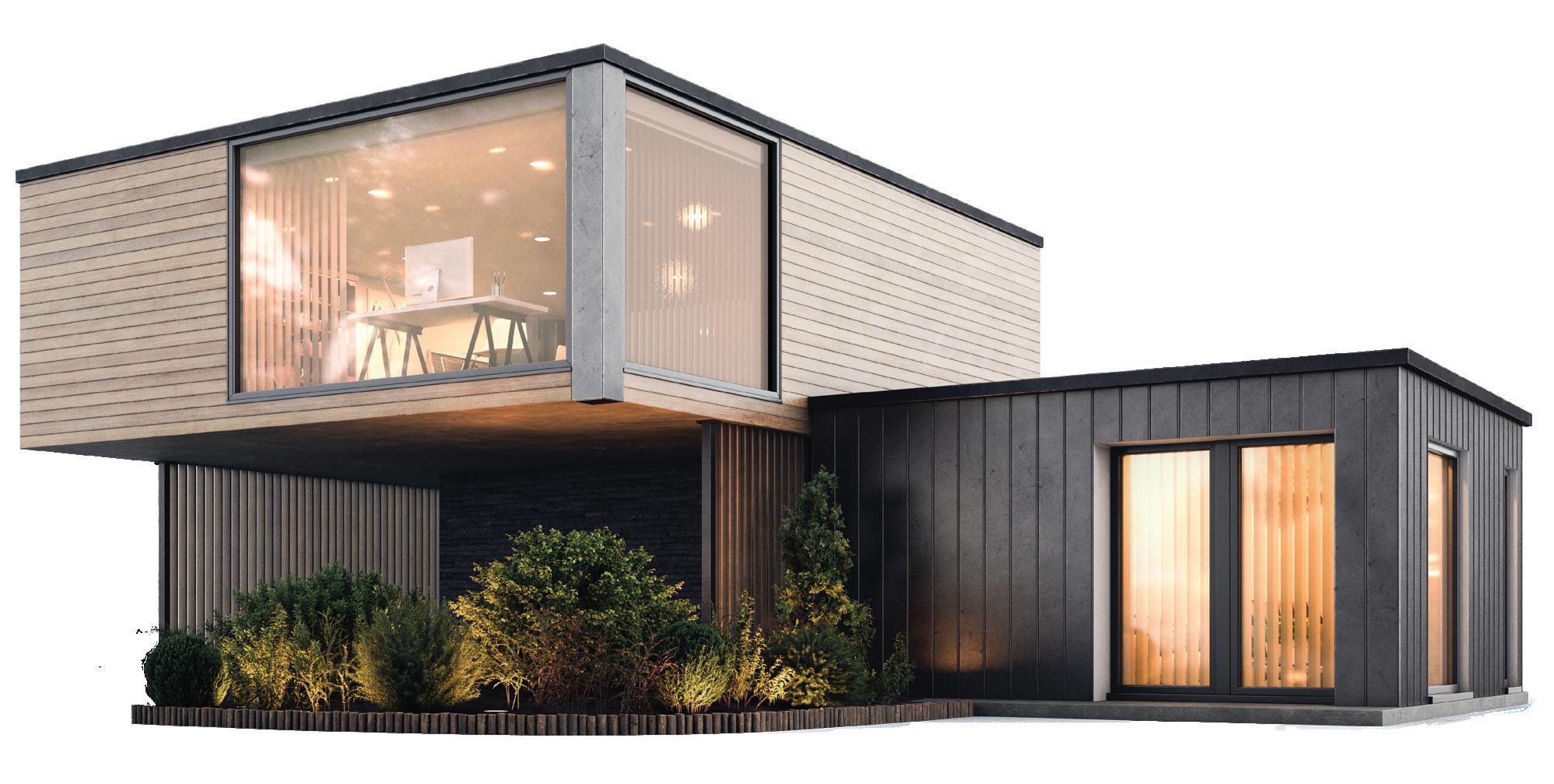


The Leader in the Energy Assessor Accreditation Industry since 2006, ABSA is a part of the BDAA which is a nationally based not-for-profit member organisation that provides information, accreditation, support and advocacy for professionals to promote and foster building sustainability in Australia.
As one of its functions, ABSA accredits HERS assessors (also called Residential Building Thermal Performance assessors) under the Federal Government’s Nationwide House Energy Rating Scheme (NatHERS) protocols. ABSA aims to provide all its members with a high level of professionalism and support. Why do we count accreditation as one of our chief functions and missions? Because the Australian government cares about accreditation. Homeowners care about accreditation. And, above all, our assessors care about accreditation.
As of 11 November 2019 all NatHERS Accredited Assessors must hold a Certificate IV in Home Energy Efficiency and Sustainability (Thermal Performance Assessment) (CPP41119). As the nation and world have come to realise that sustainability and thermal conservation are essential to the survival of the built environment, both designers and homeowners are insisting on more sustainable, ecoefficient designs. In order to expedite the accreditation process, ABSA has set out the steps that will need to be fulfilled in order to gain accreditation.
ABSA Accredited Assessors are recognised as the best in the industry undertaking regular auditing and continuous formal and informal training ensuring that the ABSA accredited assessors are held in the highest regard.
THE FUTURE SUSTAINING Let’s work together to sustain and energise the future!


Although change on this scale can seem daunting, there is a great opportunity to see sustainability for its possibilities and positive outcomes. Most sustainable actions provide measurable benefits to the natural environment and overall human happiness. Ultimately, a focus on sustainability also enables longevity for your business.
Try not to feel overwhelmed by the idea of becoming sustainable. To keep it simple, we’ve put together a roadmap which may be helpful as you move forward.
Take stock of your business operations to measure your environmental impact. In terms of emission targets, this will centre on energy and transport.
Identify ways to reduce these impacts. You could reduce power use, find new uses for wasted materials, or switch to local sources for product supply.
When you’ve reduced everything you can, purchase offsets for any remaining emissions.
A sustainability expert will have the knowledge and skills to quickly find the relevant data to measure your impact. They’ll know where to look for inefficiencies and can offer suggestions on ways to reduce your environmental impact.
It’s better to get ahead of change than get caught out by it. With regulatory changes on the horizon and a push by bigger corporations to embrace sustainability within their supply chains, SMEs can risk being cut out of bread and butter contracts they rely on. So why not seize the opportunities early, and get started now?
When you first dip your toes into the world of sustainability, it’s easy to get overwhelmed by the flood of new terminology or initialisms. In fact there’s so many, we could have published a dictionary of sustainability terms instead of this report. We’ve included a glossary of some of the most common terms, for easy reference.
Climate change - Long-term shifts in temperatures and weather paterns. Primarily driven by human activity.
Fossil fuel - Non renewable sources of energy. Formed in the earth’s crust, preserving the carbon from dead plant and animal lifeforms. Commonly used fossil fuels include coal, crude oil, and natural gas.
Global warming – The rapid heating of the Earth’s surface temperature due to greenhouse gas emissions over the past century.
Kyoto protocol - Signed in 1997, the first implementation of measures under the UNFCCC.
Modern Slavery – Umbrella term for exploitation of people that undermines their freedom, usually by coercion, threats, or deception. Includes human trafficking, slavery, debt bondage, child labor, domestic servitude.
Paris Agreement - Signed in 2016 Alsoknown as Paris Accords or Paris
Carbon footprint - Measurement of total amount of GHG emissions generated by an entity.
Carbon positive - Produces more renewable energy than it consumes.
Carbon offsetting - Removing carbon from the atmosphere to compensate for GHG emissions.
Circular economy - A way to produce and consume goods which extends the life of materials and products as long as possible. Involves sharing, reusing, leasing, repairing, refurbishing and recycling.
Emissions - Releasing something (usually a greenhouse gas or other poullutant) into the atmosphere.
E-waste - Electronic waste Discarded electronic devices, particularly items with
ClimateAccords. Current treaty under UNFCCC.
Regeneration – Moving beyond sustainable to restore life, habitats, and resources which have been damaged due to human activity.
Resilience – The ability to adapt to change and recover from adversity.
Renewable – Renewable resources are those which are naturally replenished in a human timescale. Usually refers to renewable energy sources such as solar, wind, hydropower and geothermal.
Vehicles which are powered by electricity via rechargeable batteries, rather than a combustion engine which requires fossil fuels such as petroleum gas.
Triple bottom line – A business concept that includes social and environmental as well as financial stakeholders when evaluating business performance. These three bottom lines are also referred to as the three p’s: profit, people, and the planet.
batteries or power cords.
GHG Greenhouse Gas - Refers to gases which absorb infrared radiation and trap heat in the atmosphere. Notable inclusions:
• CO2 Carbon Dioxide
• CH4 Methane
• N2O Nitrous Oxide
• O3 Ozone
GHG protocol - A standardised framework to measure GHG emissions. Includes three scopes.
• Scope 1 -Direct Emissions
• Scope 2 – Indirect (purchased) emissions
• Scope 3 – Indirect emissions resulting from business operations or product
LCA - Lifecycle Assessment Analyses environmental impact of a product,
CSR – Corporate Social Responsibility.
ESG – Environmental, Social, Governance.

EV – Electric vehicle.
GRI – Global Reporting Initiative.
GEMI – Global Environmental Management Initiative.
GSCO – Global Consortium for Sustainability Outcomes.
IPCC – Intergovernmental Panel on Climate Change.
ISO EPE – International Standards Organisation - Environmental Performance Evaluation.
SDG – Sustainable Development Goals.
UNFCCC – United Nations Framework Convention on Climate Change.
UNCSD – United Nations Conference on Sustainable Development.
material or process over its entire life cycle.
Net Zero - Cutting GHG emissions to as close to zero as possible and offsetting the remainder to reach a “net” of zero.
Net Zero 2050 - Agreement between countries to reduce GHG emissions to net zero by 2050.
3 Rs - Reduce, Reuse, Recycle. Reduce consumption. Reuse products. Recycle products to be given a new use (usually through the material components) instead of discarding.
Zero carbon - Produces no carbon emissions. The distinction here is that this does not rely on offsets to reach a “net” of zero.
Zero waste - Involves managing production cycles to reduce volume.
• ACI
• Alex Urena
• Ana Brandt
• Ashley Beaumont
• Australian Construction Market Report
• Awsaustralia.com.au
• Bdda.com.au
• Benjamin Mulholland
• Boris Stankovic
• Brad Read
• Brett Grimley
• Chris Lockhart Smith
• Chris McCabe
• Claus Ejlertsen
• ddeg.com.au
• Dick Clarke
• Elie Sleiman
• Elise Sorge
• Esther James
• Frank Geskus
• Hyne.com.au
• Jameshardie.com.au
• Jennifer Binns
• Kirsty Wulf
• Kylie Mitchell
• Lachlan McEwen
• Lysaght.com.au

• Mark Penna
• Michael Drage
• Neche Page
• Reece Keil
• RSM Australia
• Sarach Ranaweera
• SDG Align
• Simon and Peter Downes
• TecLED Lighting
• Tristan Morphett
2022.12.21
